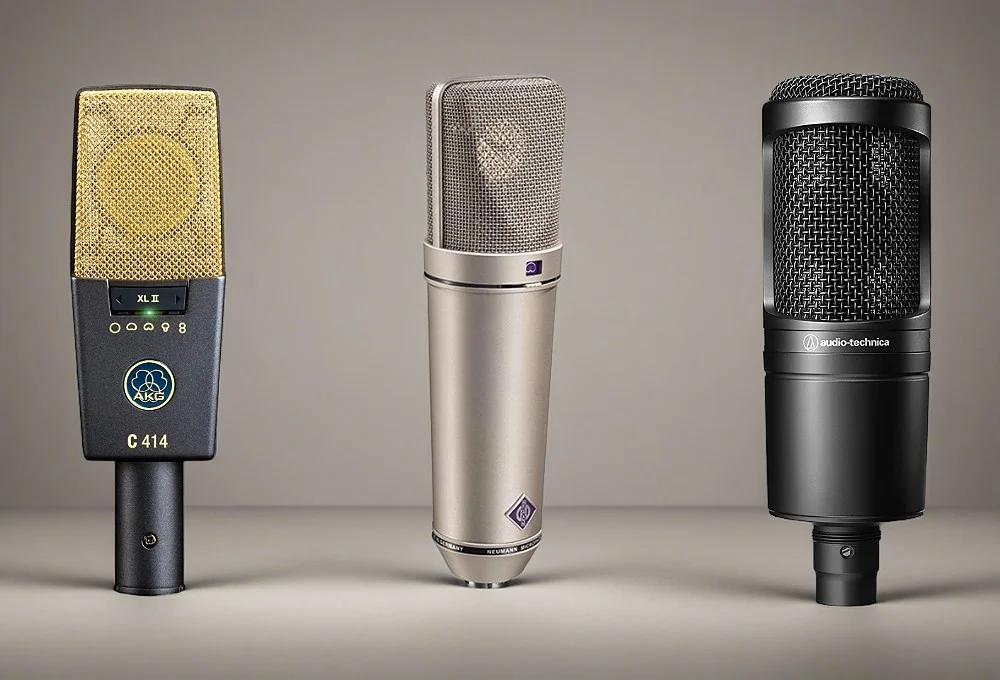If you’re a musician, podcaster, or any professional requiring superior audio recording, the right studio microphone is essential. Whether you’re connecting to a computer, mixing console, or any audio interface, a high-quality studio microphone is key to capturing crystal-clear sound.
The Neumann U 87 Ai stands out as the top choice for its exceptional versatility and unmatched sound quality, making it the best recording microphone for both musicians and seasoned audio engineers.
If you need a reliable, high-quality microphone without the premium price tag, the Audio Technica AT2020 offers an excellent balance of performance and affordability.
Our Recommendations
What You Need To Know
Who This is For
Ideal for musicians, podcasters, voice-over artists, audio engineers, and producers requiring top-notch audio quality.
Performance
All of the microphones we tested delivered good sound quality, but that doesn’t mean they are the same. We have highlighted the differences in the specific features and ease of use.
How We Picked
We focused on condenser and dynamic microphones, emphasizing versatility, frequency response, and durability.
How We Tested
Our comprehensive testing was conducted in studio settings, capturing diverse sounds. We also relied on professional feedback for our thorough evaluation.
Best Studio Microphones for Recording
A studio icon for unparalleled sound quality and versatility in professional recording.
The Neumann U 87 Ai sets the standard for sound quality and versatility. It excels with its condenser type, capturing a detailed and broad range of sounds from 20 Hz to 20 kHz.
The microphone’s multi-pattern design, including Cardioid, Omnidirectional, and Figure-8, allows for flexible recording scenarios in a professional recording studio environment. With an impressive signal-to-noise ratio, it ensures clear, precise audio capture.
The U 87 Ai also features a shock mount system for noise isolation, and its robust, elegant design is a testament to Neumann’s commitment to quality.
Its versatility and exceptional sound make it an invaluable tool for professionals in music production and voice-over work.
Versatile, high-quality condenser microphone with nine polar patterns, perfect for professionals both in the studio and other recording settings.
This condenser microphone is a versatile powerhouse, offering nine polar patterns from Omni to Hypercardioid, catering to diverse recording needs.
It inherits the clarity of the AKG C12, ideal for lead vocals and solo instruments. Capable of handling high sound pressure levels up to 158 dB without distortion, it’s suitable for loud sources. Its low self-noise level is perfect for capturing fine details.
The microphone’s flexible control features, including three bass-cut filters and pre-attenuation levels, adapt to various recording scenarios.
Built with an all-metal body and grille, it’s durable and includes essential accessories, making it a top choice for professional studios and serious audio enthusiasts.
Ideal for beginners needing quality sound in podcasting, vocals, and varied audio sources.
The Audio-Technica AT2020 is a versatile condenser microphone that balances affordability with quality, ideal for beginners and intermediate users.
It features a cardioid polar pattern, efficiently capturing sound from the front and minimizing background noise, making it suitable for podcasting and acoustic sessions.
The microphone handles high sound pressure well but requires additional mixing for louder sounds due to its high-frequency response. It boasts a robust build, though additional equipment like a shock mount and pop filter is recommended for optimal performance.
Compared to peers like the Shure SM58 or Rode NT1-A, the AT2020 offers a user-friendly design and good sound quality, making it a valuable entry-level choice.
Dynamic microphone excelling in vocal clarity and versatility, perfect for professional broadcasting, podcasting, and music production.
This dynamic microphone is renowned for its exceptional vocal clarity making it the ideal vocal mic. With a flat, wide-range frequency response, it ensures natural sound reproduction, ideal for both music and speech.
Its premium features include customizable audio profiles, advanced electromagnetic hum rejection, internal shock isolation, an integrated pop filter, and a detachable windscreen for intimate vocal work. Its sturdy yoke mounting design ensures precise positioning.
Highly versatile, it offers unparalleled sound quality for voiceovers, podcasts, or music production. Designed for serious audio professionals, this mic requires additional gear for optimal performance but promises unmatched audio excellence in studio settings.
Compact, versatile condenser microphone excelling in vocal clarity and sound quality for professional and home studios.
The Neumann TLM 102 condenser microphone is a compact yet powerful tool in the realm of studio recording. It has Neumann’s legendary sound quality, but with a more accessible price point.
Renowned for its exceptional clarity, especially in vocal reproduction, it boasts features like a built-in pop shield, high SPL handling, treble lift, and transformerless circuitry for a clear, direct sound.
Its sleek design adds aesthetic appeal. It compares favorably with higher-end models in sound quality, but is more compact and user-friendly which makes it a versatile choice for a variety of audio applications.
Advanced, versatile condenser mic with dual connectivity and high-fidelity audio, perfect for professional and home studios.
The Rode NT1 5th Generation stands out with its dual XLR and USB-C connectivity, offering unmatched flexibility for both professional and home studios. Its high-fidelity audio quality, capable of recording at 192kHz and 32-bit float, ensures impeccable clarity and true-to-source sound.
Unique features like DSP integration, unclippable microphone technology, and advanced preamplifiers make it a standout choice.
Its ease of use and adaptability, combined with the Rode Central app’s suite of effects, enhance its appeal. However, the absence of physical controls and a headphone jack may be drawbacks for some.
Ideal for versatile recording scenarios, this microphone is a top choice for quality-conscious musicians, podcasters, and voiceover artists.
High-end tube microphone combining vintage sound and modern clarity, ideal for professional, nuanced high-resolution audio recording.
The Mojave MA-1000, a tube condenser microphone, masterfully combines the vintage tone of the iconic Telefunken ELA-M 251 with modern, low-noise performance.
Featuring continuously variable polar patterns and a flat frequency response up to 10kHz, it excels in capturing detailed sound without harshness.
At its core is a Chinese-made capsule replicating the CK-12, paired with an original 5840 tube and a custom transformer, contributing to its lush, detailed sound.
Ideal for high-resolution recording, it effectively captures subtle nuances of acoustic performances.
While its premium pricing and need for an external power supply may be limitations, the MA-1000 is a top choice for audio professionals seeking vintage microphone qualities in contemporary recording environments.
Quality British-made condenser microphone, ideal for detailed studio recordings in professional and home studio environments.
The Aston Origin condenser microphone distinguishes itself with a unique combination of quality, originality, and meticulous British craftsmanship.
As a large-diaphragm cardioid condenser, it’s ideal for a broad spectrum of studio applications, offering a full-range audio capture from 20 Hz to 20 kHz.
Key features include a robust all-metal body, innovative shock resistance, and a built-in mesh pop-filter for clear audio.
It excels in capturing rich details in vocals and instruments, though it has a slightly higher self-noise level compared to some peers.
Its warm, clear sound signature and versatility in various studio applications, from voiceovers to instrument capturing, make it an attractive choice for both budding audiophiles and professional studios.
High-quality cardioid condenser microphone, ideal for professional studios and high-end home recording, offering clear, warm audio.
The Neumann TLM103 cardioid condenser microphone, inspired by the legendary U87, offers renowned Neumann sound quality at a more accessible price.
Its design combines a modern aesthetic with exceptional build quality, available in two finishes.
Key specifications include a large-diaphragm condenser, cardioid polar pattern, wide frequency response, and low self-noise, making it versatile for various recording environments.
It excels in isolating sound sources and capturing detailed, warm audio, suitable for everything from voice-over work to acoustic instruments. Its simplicity and robust build ensure reliability, though its sensitivity to ambient noise requires careful placement.
The TLM103, with its clear, detailed sound and warm character, is an essential tool for professional studios and high-end home recording setups.
Versatile Yeti X microphone: Superior sound, user-friendly features, ideal for digital content creators and home studios.
The Blue Yeti X, priced at $139.99, is a versatile and high-quality USB condenser microphone, ideal for streamers, podcasters, YouTubers, and voice actors.
Featuring a robust all-metal design, it offers four polar patterns for diverse recording scenarios. Key features include a multi-function dial, LED metering, and zero-latency monitoring.
The Yeti X excels with its four-capsule array, providing clear, unprocessed audio, perfect for professional post-production.
While its design may be bulky for some, the exceptional sound quality, user-friendly controls, and durable construction make it a competitively priced, essential tool for anyone serious about digital audio recording.
Our Research
Why You Should Trust Us
How We Picked and Tested
Our Pick: Neumann U 87 A
Runner-Up: AKG C414 XLII
Best Budget: Audio Technica AT2020
Shure SM7B Vocal Dynamic Microphone
Neumann TLM 102 Condenser Microphone
Rode NT1 5th Generation
Mojave Audio MA-1000
Aston Microphones Origin
Neumann TLM 103
Blue Yeti X
Other Good MIDI Controllers
Why You Should Trust Us
Daniel, the lead author of SoundShockAudio’s microphone reviews, is a distinguished Pyramind Music Production School graduate with a comprehensive background in music production.
Well-known as a writer and editor for top music production sites such as The Pro Audio Files, Envato, and Producer Spot, Daniel’s expertise is widely respected in the industry.
His creative talents extend to designing sought-after sample packs for major labels like Audentity Records and Sample Magic.
His work has earned featured spots on platforms like Splice and iZotope, and he has produced viral music for prestigious labels including Liftoff Recordings.
This wide-ranging experience underscores his deep understanding of audio quality and production nuances.
With practical experience in both studio and live music production settings, Daniel’s microphone reviews are rooted in real-world experience emphasizing their effectiveness and ease of use.
His hands-on approach guarantees that each review is a comprehensive guide backed by professional experience and knowledge.
At SoundShockAudio, Daniel has established a repository of music production tools, showcasing his dedication to equipping the music creation community with reliable resources.
His extensive knowledge and practical experience make this guide an invaluable, trustworthy resource for anyone seeking the best microphones for their production needs.
How We Picked and Tested
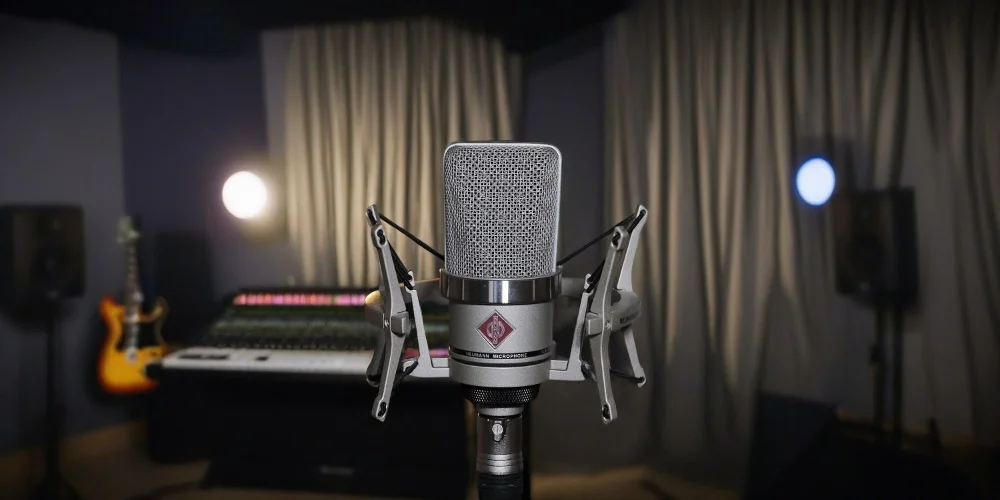
The choice of recording microphones plays a pivotal role in achieving the desired sound quality in a recording studio environment.
To identify the best studio microphones for your recording needs our team of audio engineers, professional musicians, and technical experts tested and evaluated a wide range of microphones.
Initial Selection
Our initial list included over 50 microphones from well-known brands like Neumann, Shure, AKG, Rode, Audio Technica, Mojave Audio, and Aston Microphones.
We considered various types, including condenser, dynamic, ribbon, and USB microphones, each known for its unique characteristics in sound capture.
Criteria for Selection
- Type and Intended Use: We categorized microphones based on their type and the specific recording scenarios they are best suited for, such as vocals, instruments, podcasts, or broadcasting.
- Frequency Response: We tested this key factor to determine the sound signature of each microphone.
- Polar Patterns: The variety of polar patterns offered by each microphone was tested in different recording environments.
- Sensitivity and SPL Handling: We also tested their ability to capture subtle nuances without distortion at high sound pressure levels.
- Signal-to-Noise Ratio: Was tested to ensure clarity and purity of the recorded sound.
- Durability and Build Quality: We compared the construction and design and tested each mic to find out if it would stand up to regular studio use.
- Brand Reputation and User Reviews: In our evaluation we also considered the reputation of the brand and feedback from actual users.
Testing Environment
We set up a controlled studio environment replicating typical recording settings. The room was acoustically treated to minimize external noise and echo, providing a neutral testing ground.
Testing Methodology
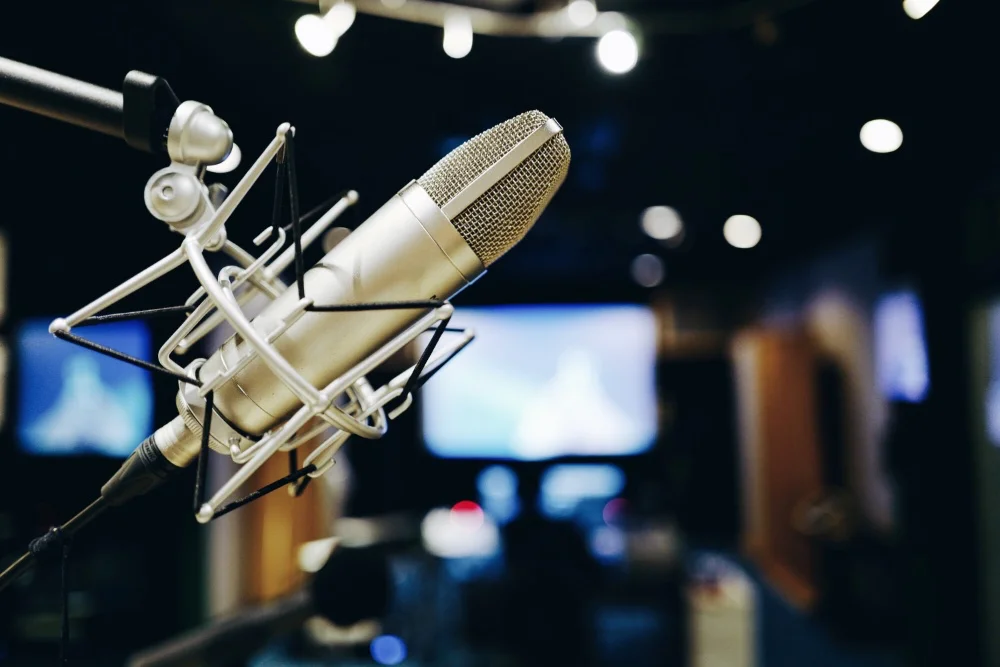
Our testing methodology was divided into several phases:
- Technical Analysis: Each microphone underwent a technical assessment using audio analysis software. We measured frequency response, signal-to-noise ratio, and distortion levels.
- Subjective Listening Tests: A panel of experienced audio engineers and musicians conducted listening tests with a range of sources, including male and female vocals, acoustic guitars, pianos, and percussions, to assess the sonic characteristics and versatility of each microphone.
- Consistency and Reliability Tests: Each microphone was tested repeatedly to check for consistency in performance and any potential reliability issues over extended use.
- Ease of Use and Practicality: We also assessed the user-friendliness of each microphone, including setup, adjustability, and compatibility with various audio interfaces and recording equipment.
- Additional Features Evaluation: We explored extra features like built-in pop filters, switchable polar patterns, attenuation pads, and included accessories.
Detailed Testing Process
- Vocal Recording Test: We recorded multiple vocal sessions focusing on clarity, warmth, presence, and how each microphone captured the nuances and dynamics of the human voice.
- Instrumental Recording Test: Acoustic instruments were recorded to evaluate each microphone’s ability to accurately reproduce natural sounds, their response to different frequencies, and transient handling.
- Ambient and Room Sound Test: We assessed each microphone’s ability to capture room ambience and their effectiveness in different polar patterns.
- Sound Isolation Test: We tested how well the microphones rejected off-axis sounds, an essential factor for studio recording.
- Durability Test: Physical assessments were made by subjecting the microphones to handling and usage that mimicked regular studio wear and tear.
Comparative Analysis
Each microphone was compared to other microphones in the same use category. This comparative analysis emphasized the unique selling points and potential drawbacks of each model.
Collaborative Feedback
We collaborated with recording studios and professional sound engineers who provided their mics for testing and shared their insights. This real-world feedback added depth to our understanding of each microphone’s performance in various recording environments.
Documentation and Review
Each test was meticulously documented. Audio recordings were analyzed both visually through waveforms and spectrally, and subjectively through critical listening sessions.
Our Pick: Neumann U 87 Ai
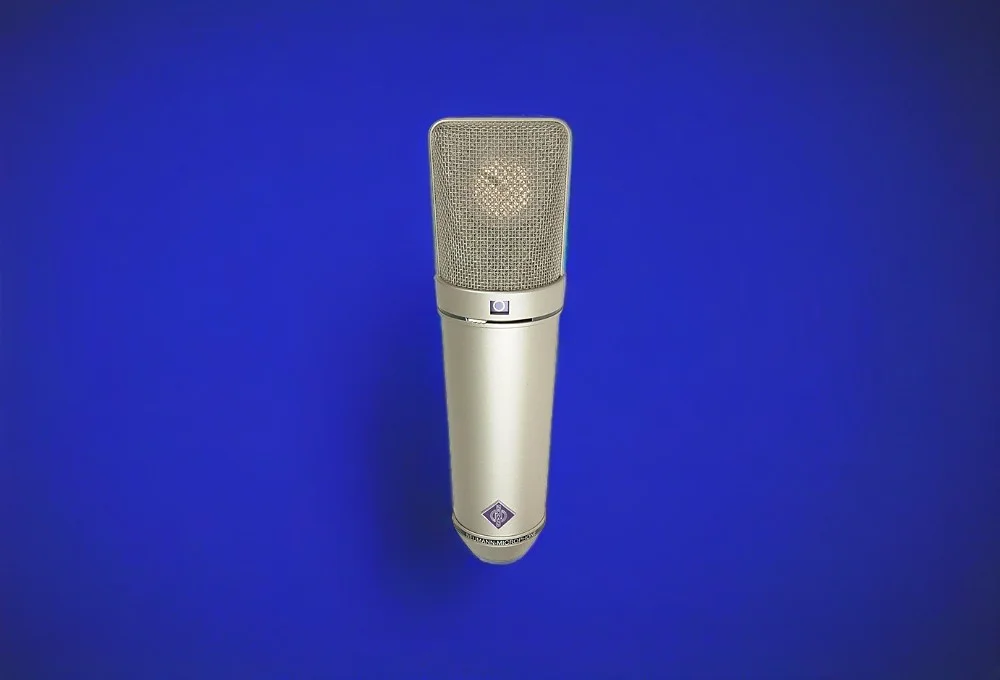
A studio icon for unparalleled sound quality and versatility in professional recording.
The Neumann U 87 Ai is an excellent studio microphone.
Favored by audio engineers for its unparalleled adaptability and crystal-clear sound quality, this condenser microphone has become a fixture in professional recording studios capturing sound with precision and grace.
Technical Specs at a Glance
- Microphone Type: Condenser – a true expert in capturing sound with intricate detail.
- Polar Patterns: Multi-Pattern versatility, including Cardioid, Omnidirectional, and Figure-8, catering to every studio need.
- Signal-to-Noise Ratio: A solid 82 dB (A-weighted), ensuring your recordings are more signal, less noise.
- Sensitivity: Exceptionally responsive, turning sound into electrical signals with finesse.
- Connectivity: The standard XLR setup, ready for professional use.
- Power Requirements: Relies on Phantom Power (+48 volts), typical for a microphone of this caliber.
Key Features
- Advanced Shock Mount System: The EA87 shock mount is a game-changer, effectively shielding the mic from unwanted vibrations and handling noise.
- Attenuation and Low-Cut Filters: With a 10 dB attenuation switch and a low-frequency Roll-off, it’s ready for any acoustic challenge.
- Exceptional Sound Processing: It’s all about natural sound reproduction, with just the right amount of presence boost for standout vocals and instruments.
- Design and Durability: Sturdy, all-metal body, available in sleek nickel or classic black, proving that Neumann thinks about looks as much as performance.
In-Studio Experience
In the studio, the U 87 Ai is a maestro. It captures the essence of every vocal take and the depth of every instrument.
Voice-over artists love it for the clarity it brings to their narration, while musicians laud its ability to handle complex arrangements with ease, making it an ideal choice for those in need of reliable vocal mics as well as instrument recording solutions.
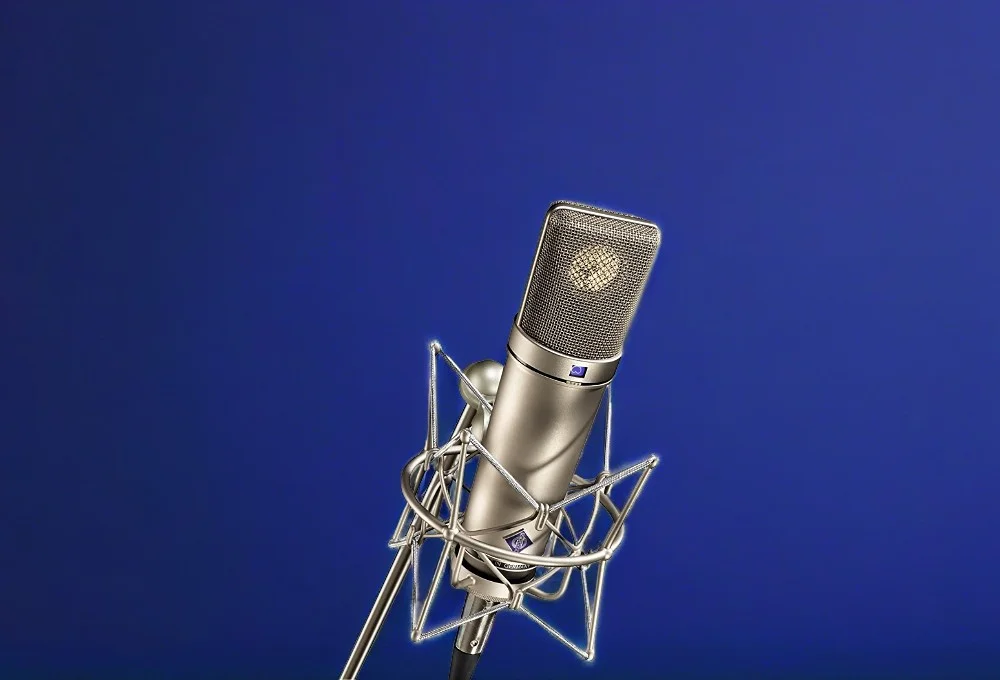
How Does This Studio Mic Stack Up?
Stacked against its peers, the U 87 Ai consistently comes out on top. While some mics excel in niche areas, this Neumann offers a full package.
Anything that you choose to record with the U 87 Ai comes out with a pristine recording. That’s why it’s remained a studio darling for decades, a testimony to its enduring quality and appeal.
Studio Spotlight
- Historical Significance: More than just a mic, the U 87 Ai is a piece of recording history. Since its debut, it’s set the bar for studio sound quality.
- Versatility: Whether you’re recording a soloist, an orchestra, or a quick vocal take, the U 87 Ai adapts effortlessly. Its ability to capture the full sound spectrum makes it a versatile tool for any genre.
Pros and Cons
Pros:
- A range of polar patterns for different recording scenarios.
- Noise isolation that lets your sound shine.
- Sound processing that adds clarity and character.
- A design that’s as tough as it is good-looking.
Cons:
- The price tag reflects its high-end status.
- Reliant on external phantom power.
- Accessories might add to the cost.
The Neumann U 87 Ai is a testament to Neumann’s dedication to sound perfection. It brings a rich legacy of audio excellence to any studio, enhancing recording quality and pushing production standards to new heights.
Runner-Up: AKG C414 XLII
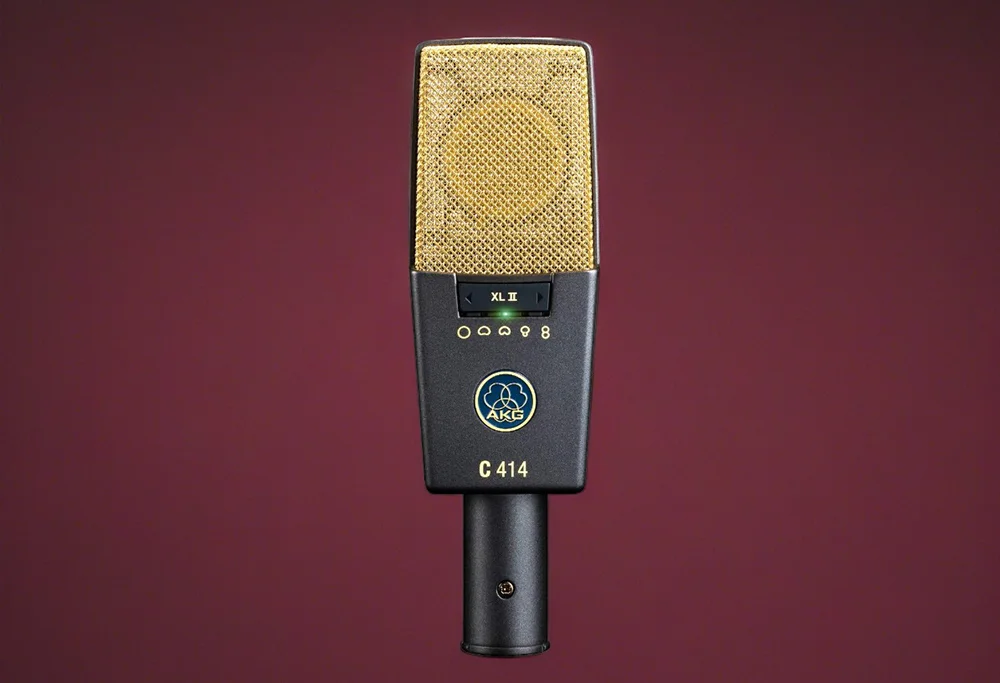
Versatile, high-quality condenser microphone with nine polar patterns, perfect for professionals both in the studio and other recording settings.
Whether you’re a professional studio engineer or a passionate home recorder, the AKG C414 XLII is designed to elevate your audio experience.
Technical Specs at a Glance
- Microphone Type: Condenser
- Polar Patterns: Nine options including Cardioid, Omnidirectional, Figure of Eight, and more
- Signal-to-Noise Ratio: 88 dB-A
- Sensitivity: -33 dB
- Connectivity: XLR
- Power Requirements: 48V phantom power
Key Features
- Nine Polar Patterns: Tailor your recording precisely with options from Omni to Hypercardioid.
- Sonic Character: Inherits the famed clarity of the AKG C12, perfect for lead vocals and solo instruments.
- High SPL Handling: Manages extreme sound levels up to 158 dB without distortion.
- Low Self-Noise: With a self-noise level of 6 dB-A, it’s ideal for capturing the finest details.
- Flexibility in Control: Features like three bass-cut filters and pre-attenuation levels adapt to any recording scenario.
- Robust Build Quality: All-metal body and grille ensure durability and performance longevity.
- Included Accessories: Comes with a shock mount, pop filter, windscreen, and carrying case.
Versatility That Inspires Creativity
The C414 XLII offers nine polar patterns. This means whether you’re recording a delicate string quartet, robust brass instruments, or dynamic vocals, this mic adapts seamlessly.
The versatility extends to its ability to handle high SPLs, making it a go-to for louder instruments.
Sound Quality That Defines Sessions
Drawing from the lineage of the AKG C12, the C414 XLII captures sound with clarity and presence that can make your recordings stand out.
The slight presence boost and spatial reproduction bring vocals and solo instruments to life, ensuring they cut through even in dense mixes.
Built for the Rigors of Recording
With its robust build quality, this microphone is not just about performance but also about enduring value.
The all-metal body and grille, coupled with a comprehensive set of accessories, including a shock mount and pop filter, mean the C414 XLII is ready for any recording scenario.
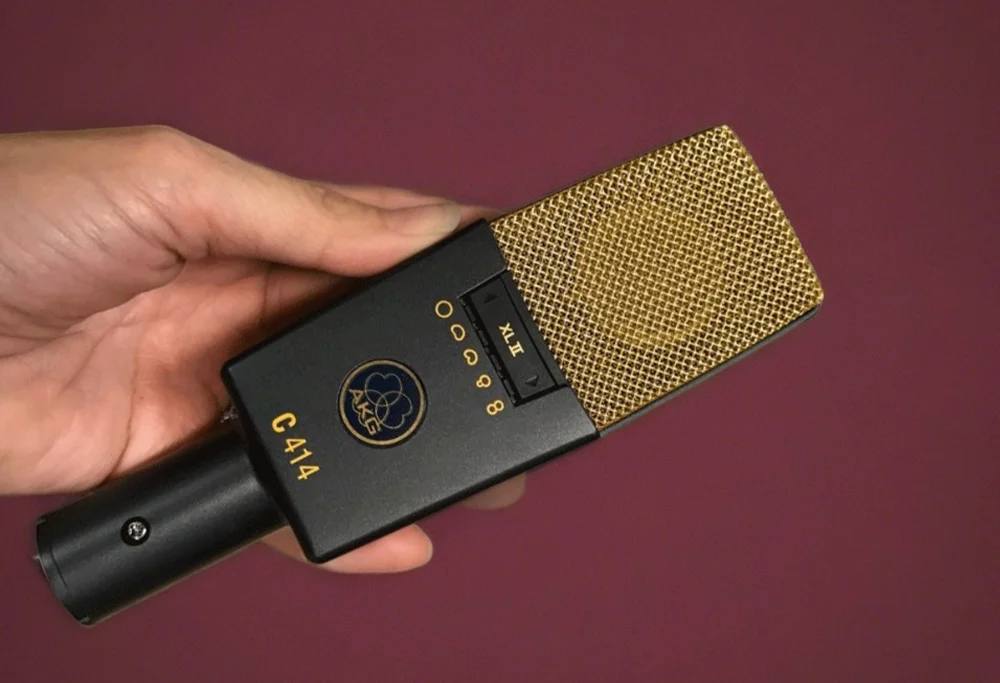
Tailored Control for Pristine Recordings
The microphone’s three attenuation levels and bass-cut filters give you the power to fine-tune your recordings. Whether it’s reducing wind noise, stage vibration, or proximity effect, the C414 XLII puts control at your fingertips.
In-Studio Experience
Users praise the C414 XLII for its ability to capture sound accurately at different angles and distances, making it perfect for recording in diverse environments. The low-end weight it adds to acoustic guitar recordings is substantial, yet it maintains a clarity that’s hard to match.
Pros and Cons
Pros:
- Nine selectable polar patterns for versatile recording.
- Inherits the sonic character of the legendary AKG C12.
- Handles high SPLs and offers low self-noise.
- Durable build quality with essential accessories included.
Cons:
- Higher price than some competitors, which may be prohibitive for hobbyists.
- Some users may find the need for additional equalization adjustments.
- Lacks the smoothest upper frequencies compared to some rivals.
Is the AKG C414 Right for You?
The AKG C414 XLII is recommended for audio professionals and serious enthusiasts. Its price is justified by its performance, making it an excellent choice for anyone wanting to improve their recording equipment for podcasting, broadcasting, or music production.
Best Budget: Audio Technica AT2020
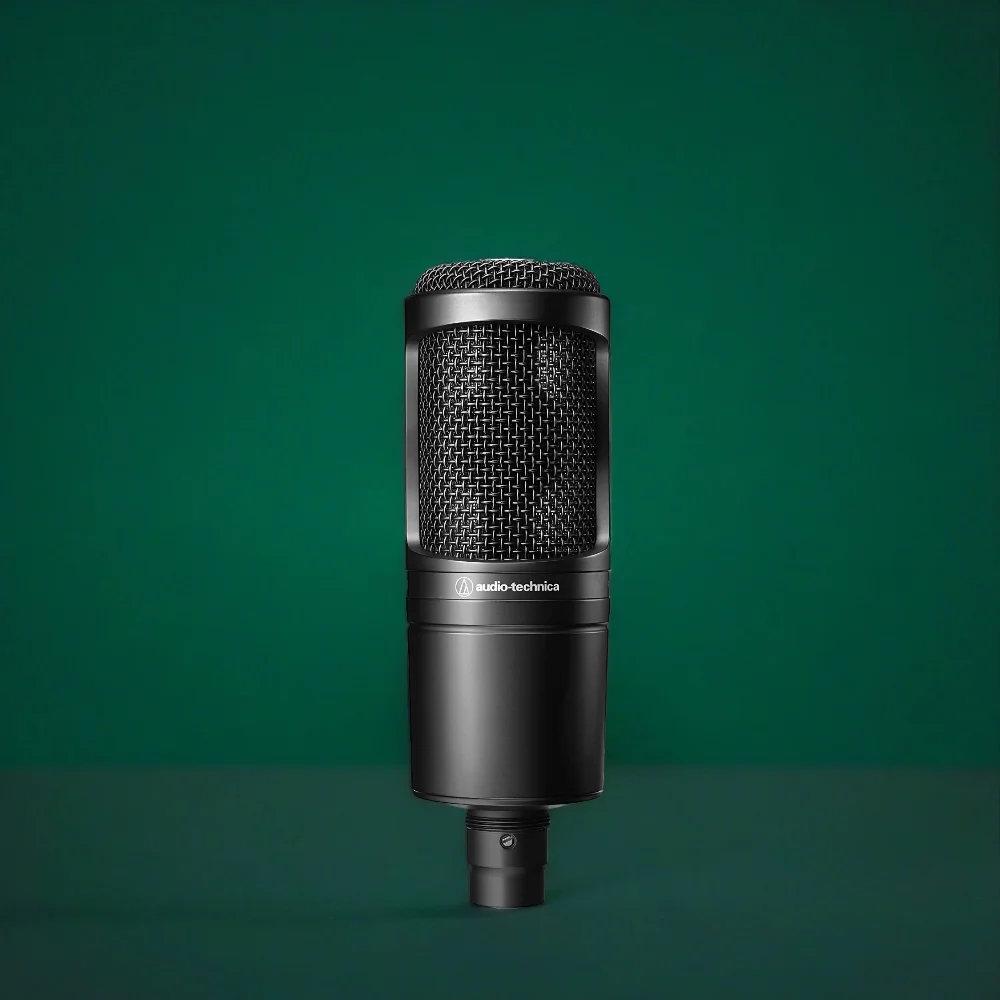
Ideal for beginners needing quality sound in podcasting, vocals, and varied audio sources.
The Audio-Technica AT2020 has become a staple for many new audio enthusiasts.
This mic bridges the gap between affordability and quality. But, as you might guess, it’s not without its quirks.
Our detailed review will help you decide whether the AT2020 is the right microphone for you.
Technical Specs at a Glance
- Type of Microphone: Condenser
- Polar Pattern: Cardioid
- Signal-to-Noise Ratio: Moderate, with an average of 20dB(A) EIN
- Sensitivity: 14.1mV/Pa – handles high sound pressure well
- Connectivity: XLR
- Power Requirements: 48V phantom power
Key Features
The AT2020 neutral frequency response, slightly leaning away from the bass, makes it versatile for a variety of audio sources. However, you might find it lacks the warmth in bass tones that some other mics in this price range offer.
- The AT2020’s cardioid polar pattern effectively captures sound from the front while minimizing unwanted background noise which is perfect for use with softer sounds, such as in podcasting or acoustic sessions.
- It requires some additional mixing efforts for louder, dynamic sounds due to its pronounced high-frequency response.
- This microphone offers a good balance of price and performance, making it an attractive option for those starting out or on a tight budget.
- Consider investing in a shock mount and a pop filter to enhance the AT2020’s performance.
- Experiment with mic placement to find the sweet spot for your specific recording needs.
- If you’re into streaming or prefer a USB setup, the AT2020USB-X and AT2020USB-XP are worth exploring.
In-Studio Experience
If you’re planning to set up a home studio or a small recording setup, the AT2020 could be your go-to microphone. Its solid build quality ensures it can withstand the occasional bumps and knocks.
But, here’s a tip: invest in a shock mount and a pop filter to enhance the AT2020’s performance, especially if handling noise is a concern.
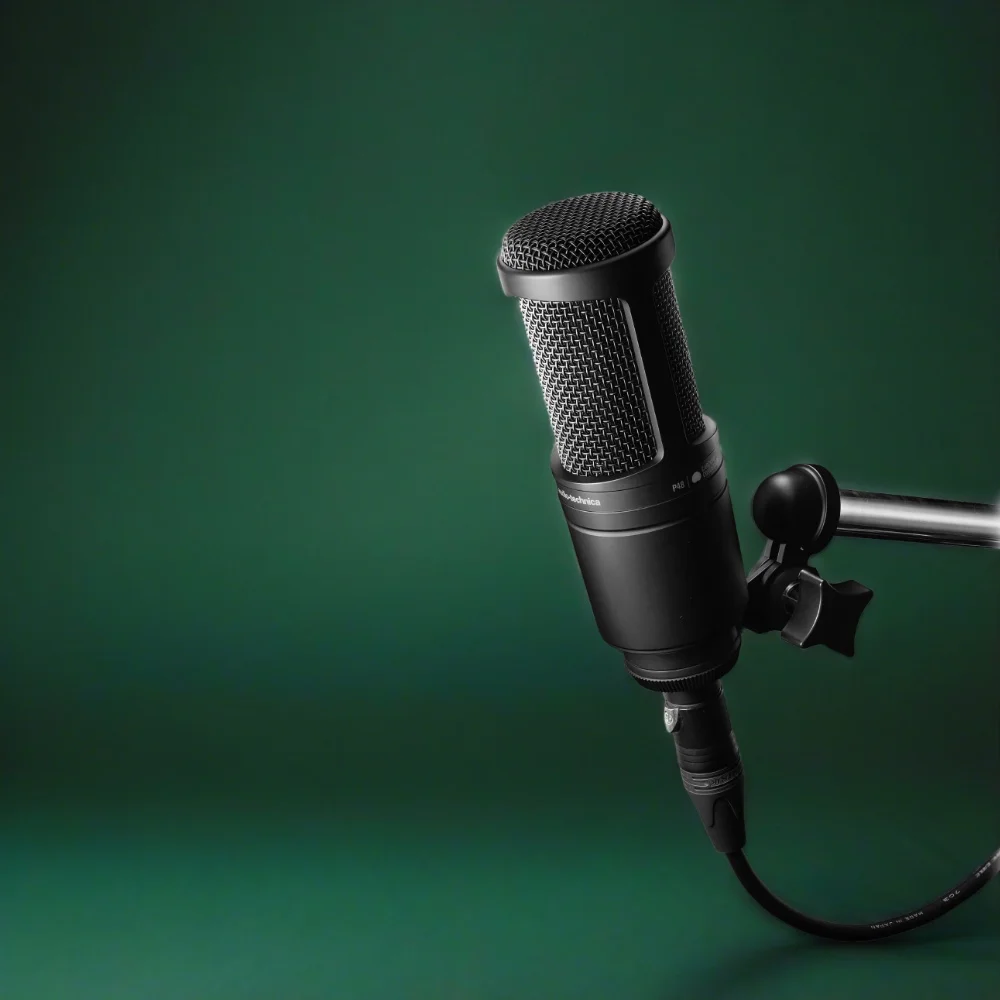
How Does it Stack Up?
When compared to its peers like the Shure SM58 or the Rode NT1-A, the AT2020 holds its own in terms of build and sound quality.
However, the Rode NT1-A, known for its incredibly low self-noise, might edge out the AT2020 for more professional settings.
Studio Spotlight: Perfect for Any Home Studio
The AT2020’s real charm lies in its simplicity and effectiveness. It’s a no-fuss microphone that gets the job done, be it in podcasting, vocal recording, or instrument recording.
The USB versions, namely the AT2020USB-X and AT2020USB-XP, cater to those looking for a simpler, direct-to-computer recording experience.
Pros and Cons
Pros:
- Affordability makes it accessible for beginners.
- Resilient to loud sounds, minimizing distortion.
- Robust build for consistent use.
- User-friendly design for easy setup.
Cons:
- Requires extra gear like a shock mount for optimal use.
- Requires some additional mixing efforts for louder, dynamic sounds due to its pronounced high-frequency response.
- Struggles with plosives, needing careful placement.
- Not the best choice for live performances.
Is the AT2020 Right for You?
The Audio-Technica AT2020 offers a balance of price and performance.
While it may not be the pinnacle of recording technology, its ease of use, durability, and decent sound quality make it a valuable asset for beginners and intermediate users.
The AT2020 is an excellent choice for an high-quality, entry-level mic. Its ability to handle a variety of sound sources with clarity makes it a versatile tool, especially if you’re just starting out.
Shure SM7B Vocal Dynamic Microphone
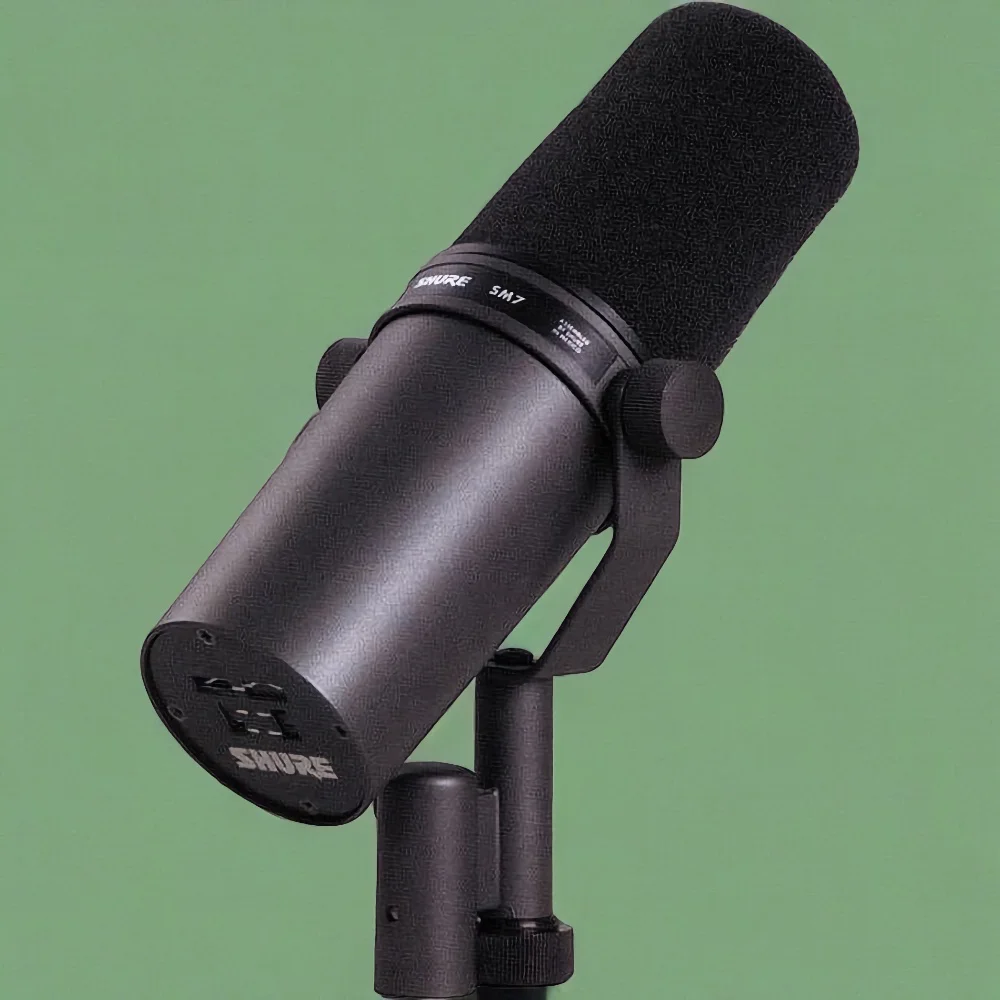
Dynamic microphone excelling in vocal clarity and versatility, perfect for professional broadcasting, podcasting, and music production.
You’ve likely heard of the Shure SM7B, a dynamic microphone that’s known for its ability to deliver smooth, warm vocals in top-tier broadcasting and intricate podcasting. Beyond its primary function, the SM7B stands out for its nuanced capture of the human voice, while eliminating background distractions.
Technical Specs at a Glance
- Type of Microphone: Dynamic
- Polar Pattern: Cardioid
- Signal-to-Noise Ratio: 79 dB
- Sensitivity: low sensitivity of -59 decibel or 1.1 mV/Pa requires more gain than most entry-level or mid-tier preamplifiers can provide, which can pose challenges when used on quiet sources, but its low sensitivity also aids in rejecting background noise and reducing sensitivity to sounds from the rear or sides.
- Connectivity: XLR
- Power Requirements: Since it is a dynamic mic, it doesn’t require external power like phantom power to operate.
Key Features
- Flat, Wide-Range Frequency Response: This is where the SM7B shines, offering clean and natural sound reproduction that enhances both music and speech. It will provide a studio-quality sound in your home setup.
- Customizable Audio Profiles: With its bass roll-off and mid-range emphasis controls, it’s like having a mini soundboard at your fingertips, allowing you to tweak the audio to your liking.
- Advanced Electromagnetic Hum Rejection: Ideal for home studio setups, as it minimizes interference from your computer and other electronic devices.
- Internal Shock Isolation: Almost magically eliminates mechanical noise, ensuring that your audio recordings are crisp and clear.
- Integrated Pop Filter: Say goodbye to those annoying popping sounds in your recordings. This built-in filter is a game-changer, especially for vocalists and podcasters.
- Detachable Windscreen (A7WS): Adds a warmer tone to your close-talk vocals, perfect for those intimate podcast episodes or voiceovers.
- Yoke Mounting Design: Provides precise microphone positioning, which is crucial in studio settings. No more struggling to get the mic just right.
In Studio Experience: Why This Mics a Reliable Choice
From my personal experience, the SM7B is both reliable and versatile. It excels in articulating vocal intricacies while maintaining clarity.
The SM7B is praised for handling high sound pressure levels without distortion and is known for its excellent off-axis sound rejection. It is user-friendly, durable, and reliable.
But remember, you might need additional equipment like a Cloudlifter for optimal performance.
How Does It Stack Up?
The SM7B sets itself apart with its unique blend of warm vocal clarity and customizable settings. It’s more durable and versatile than the Rode NT1-A, which, while commendable, doesn’t quite match the SM7B’s robust build.
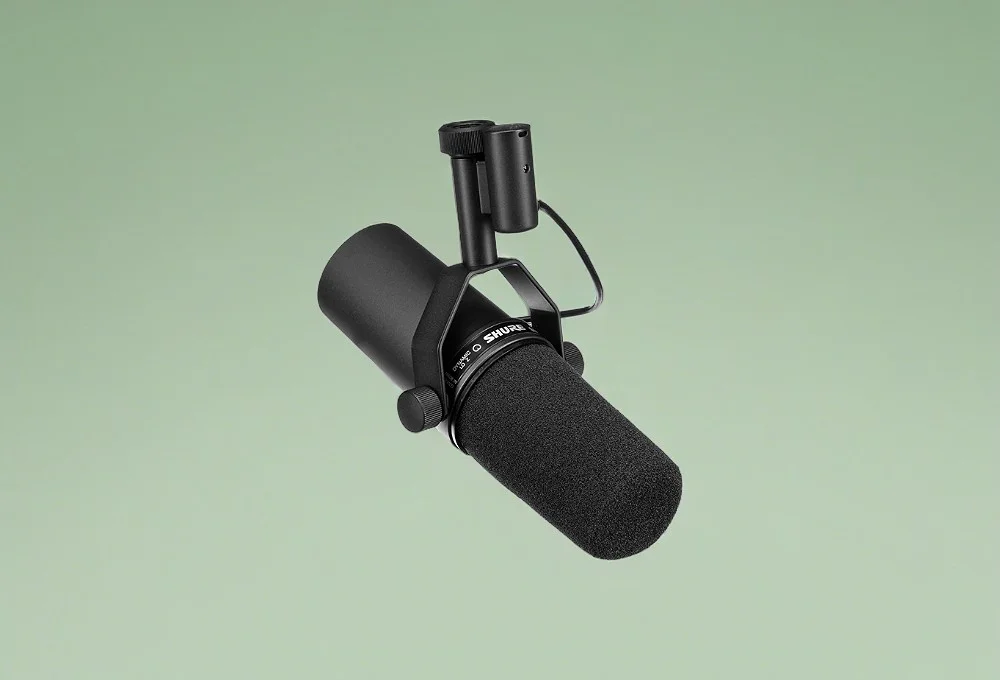
Pros and Cons
Pros:
- Dual Frequency Shaping Switches allow you to tailor your sound for different recording needs, whether it’s a podcast or a musical performance.
- Exceptional Off-Axis Rejection–perfect for studio environments where sound clarity is paramount.
- Effective at reducing room noise, making it a popular choice for podcasting, radio, and music studios.
- Can handle very high sound pressure levels, making it suitable for loud vocal recordings and instruments.
- Effective on-board frequency response filters contribute to its excellent vocal reproduction.
- Doesn’t require external power like phantom power to operate.
- Built to last, with a reputation for being a real workhorse with a formidable build quality.
Cons:
- Higher price than some competitors.
- Lower output signal compared to some other vocal microphones, requires a good amount of gain from the preamp or audio interface.
- Relatively heavy, which may be a factor to consider in certain situations.
- As a dynamic microphone, it may not provide the same level of crispness as condenser microphones.
- Some users find it less natural-sounding in the low end than some competitors.
The Shure SM7B is praised for its clear sound, durability, and ability to reduce room noise, but it may not be suitable for those looking for a more budget-friendly option or a microphone with a more natural low end.
Is the Shure SM7B Right for You?
The Shure SM7B is known for its exceptional clarity and versatility, making it ideal for podcasting, broadcasting, and music production.
Its high-quality performance in capturing vocals and instruments alike has cemented its status as a studio staple.
Before investing in the SM7B, consider your level of involvement in audio work.
This microphone, while offering superior audio quality, comes with a higher price tag and may require additional gear like a Cloudlifter for optimal performance, particularly in home studio setups.
It’s a significant investment, suited for those serious about their craft and seeking professional-grade audio.
The SM7B’s robust build and reliability are well-regarded among professionals, and its ability to deliver clear, crisp sound is unmatched.
Its off-axis sound rejection is particularly beneficial in studio environments where background noise needs to be minimized.
If you are a professional or an enthusiastic hobbyist ready to invest in top-tier audio equipment, the SM7B is an excellent choice.
However, for beginners or those with limited budgets, consider carefully whether a high-end microphone aligns with your current audio needs and future goals.
The SM7B is an investment in quality, designed for those who prioritize premium audio in their work.
Neumann TLM 102 Condenser Microphone
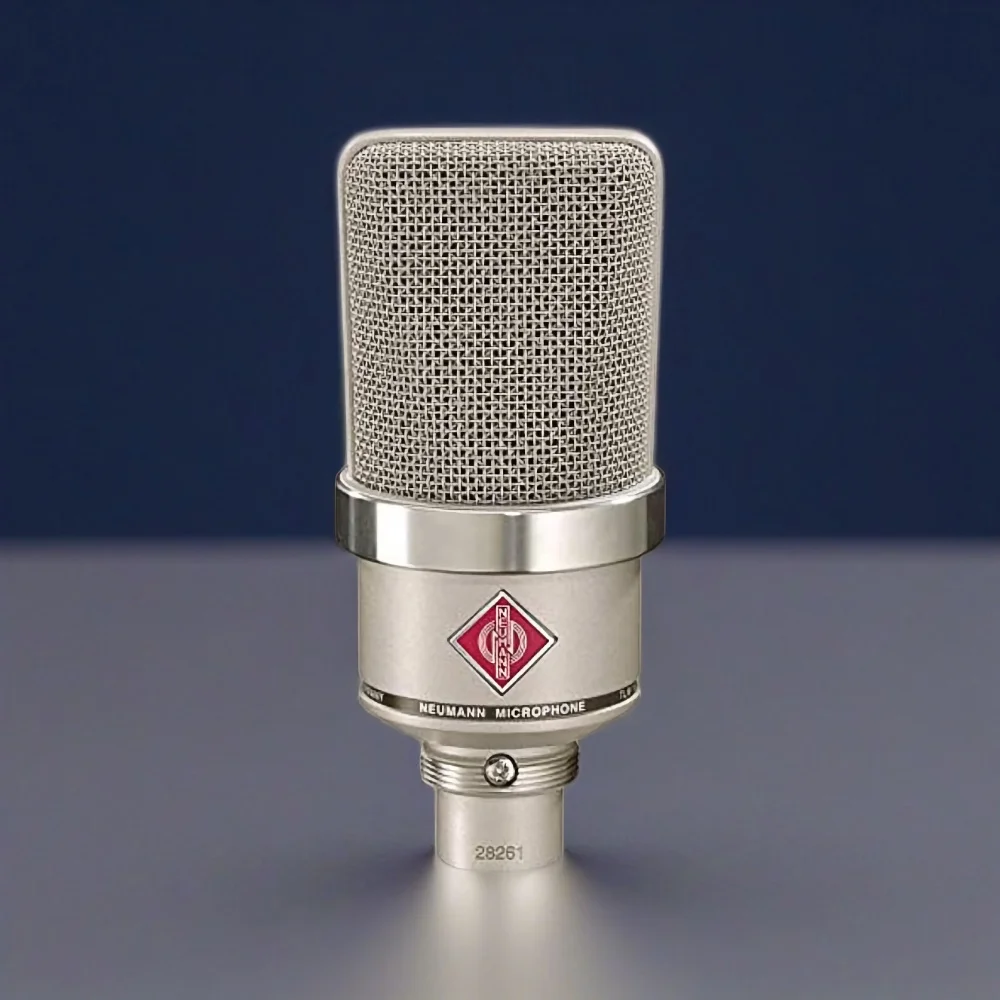
Compact, versatile condenser microphone excelling in vocal clarity and sound quality for professional and home studios.
The Neumann TLM 102 stands out as a compact yet powerful contender. Renowned for its premium large diaphragm and affordable price, this microphone is a testament to Neumann’s commitment to quality.
Engineered in Germany, the TLM 102 merges Neumann’s traditional excellence with modern practicality, making it a favorite in smaller studios.
Technical Specs at a Glance
- Type of Microphone: Condenser
- Polar Pattern: Cardioid
- Signal-to-Noise Ratio: A-weighted 82 dB (CCIR: 73 dB)
- Sensitivity: 11 mV/Pa
- Connectivity: XLR
- Power Requirements: +48V phantom power
Key Features
- Compact Design: Ideal for both professional and home studios.
- Exceptional Sound Clarity: Captures a natural sound, particularly effective for vocals.
- Built-in Pop Shield: Minimizes plosives for cleaner recordings.
- High SPL Handling: Accommodates up to 144 dB, suitable for loud sources.
- Treble Lift: Adds ‘sweetness’ to vocals.
- Transformerless Circuitry: Ensures a clear, direct sound.
- Low Self-Noise: Just 12 dB-A, reducing background noise.
- Robust Construction: Durable and designed for longevity.
Studio Spotlight
The TLM 102’s true forte lies in its sonic clarity.
It offers a crystal-clear sound profile, adept at capturing everything from the subtle nuances of vocal performances to the vibrant energy of instruments. Its sleek design, featuring a tapered look with a gleaming chrome ring, is not just aesthetically pleasing but also functional.
With a low self-noise level of 12 dB-A and the capability to handle sound pressure levels up to 144 dB, it’s a versatile and reliable performer.
In-Studio Experience
The TLM 102 excels in various recording settings. Its linear frequency response up to 6,000 Hz, with a subsequent treble boost, ensures a smooth and natural sound.
Whether it’s capturing the delicate tones of an acoustic guitar, the crunch of a guitar amplifier, or the boldness of a drum kit, this microphone handles it with finesse.
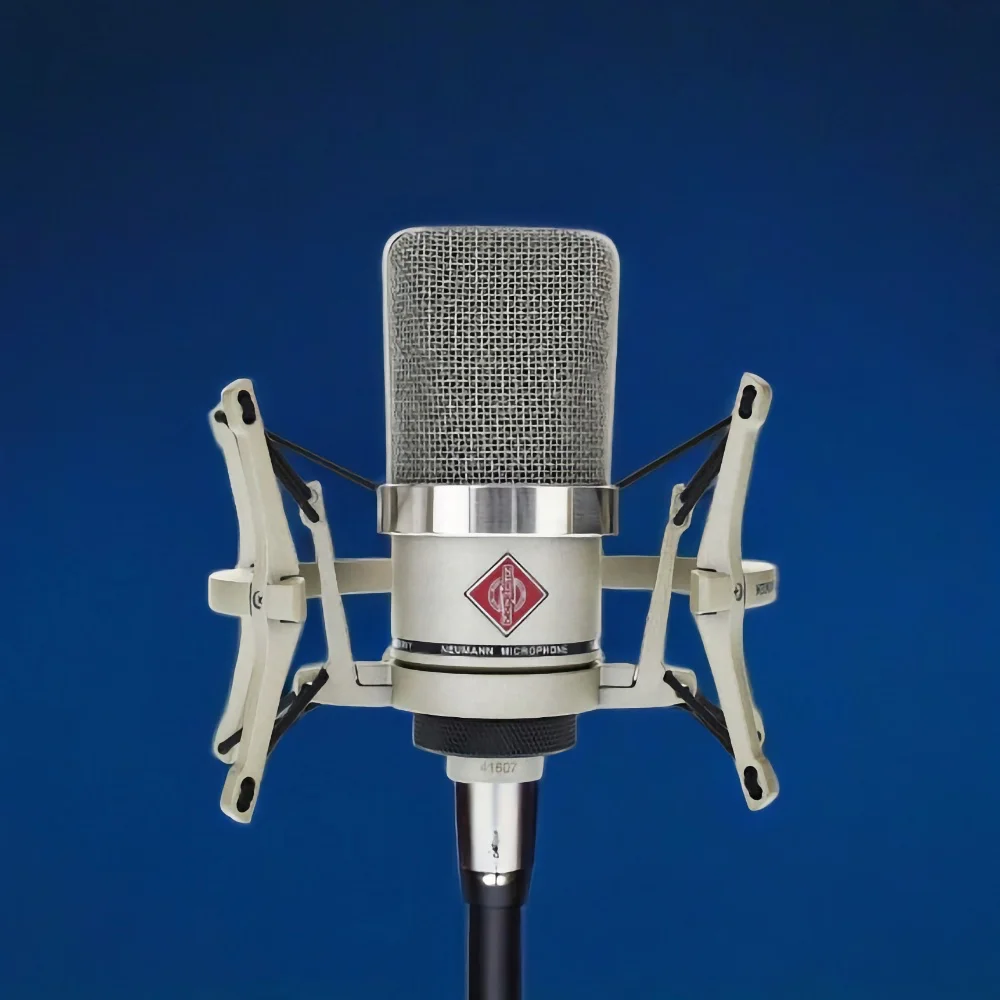
Comparison to Competitors
When placed against higher-end models like the Neumann U87 or the BM 800, the TLM 102 maintains its ground impressively.
While it lacks some accessories that come with more expensive microphones, its sound-capturing capabilities are nearly on par, offering an excellent value for its price.
Pros and Cons
Pros:
- Superior sound quality, capturing smooth lows and clear highs.
- Versatile for a range of audio applications.
- Compact size, making it manageable in various environments.
- High SPL handling without distortion.
Cons:
- Higher price than some entry-level microphones.
- May require additional accessories for optimal performance.
Is the Neumann TLM 102 Right for You?
The Neumann TLM 102 is an excellent choice for audio professionals and enthusiasts who prioritize sound quality and versatility.
Whether you’re a musician, podcaster, voice-over artist, or home studio owner, this mic offers a balance of professional-grade performance and practicality.
Summary
The Neumann TLM 102 is a worthwhile investment for anyone engaged in serious audio work and looking for one of the best studio microphones.
Well known for its combination of excellent sound quality, versatility, and durability. The TLM 102’s performance justifies the investment for those serious about their audio quality.
Rode NT1 5th Generation
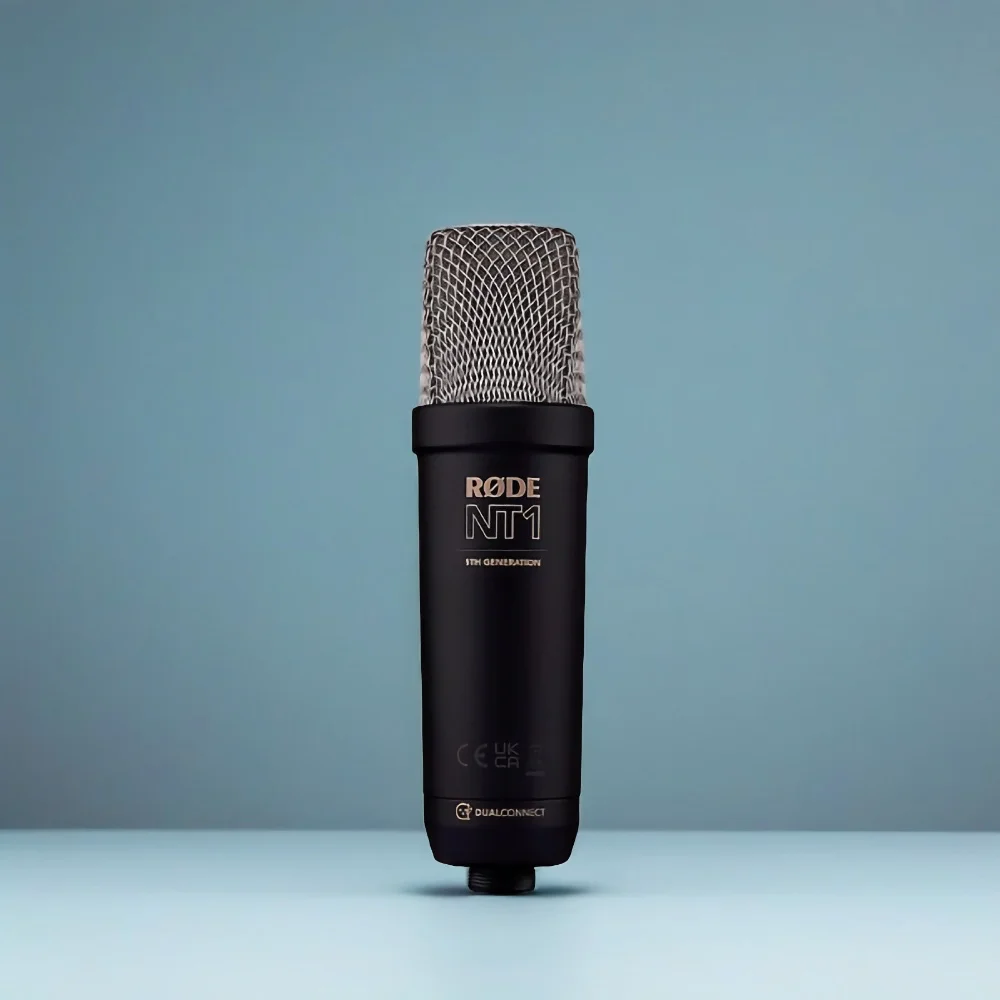
Advanced, versatile condenser mic with dual connectivity and high-fidelity audio, perfect for professional and home studios.
The Rode NT1 5th Generation delivers quality where it matters. Housed in a sleek design, this robust 1-inch cardioid capsule recording microphone ensures a broad frequency response – an essential feature for your diverse recording needs.
Technical Specs at a Glance
- Type: Condenser
- Polar Pattern: Primarily Cardioid
- Signal-to-Noise Ratio: Impressively low noise
- Sensitivity: Captures the faintest of sounds
- Connectivity: Dual delight with XLR and USB-C
- Power: USB-powered, and phantom power for XLR mode
Key Features
- Dual Connectivity: XLR and USB-C inputs provide unparalleled flexibility. Whether you’re recording in a high-end studio setup or a makeshift home studio, this mic adapts effortlessly.
- High-Fidelity Audio Quality: With its ability to record at 192kHz and 32-bit float, the sound quality is impeccably clear and true to source. It’s like capturing every nuance of your audio in high-definition.
- DSP Integration: Through the Rode Central app, you can access a suite of Digital Signal Processing effects, such as compression, noise gate, high pass filter, and aural exciters. These apps also let you record multiple Rode mics simultaneously (ideal for podcast setups). These tools let you fine-tune your sound in real-time, adding depth and clarity to your recordings.
- Unclippable Microphone Technology: The 32-bit float mode is a game-changer, virtually eliminating the risk of audio clipping – a boon for dynamic recording scenarios.
- Advanced Preamplifiers and A/D Converters: The NT1 5th Gen boasts four preamplifiers and analog-to-digital converters, each optimized for different amplitude sounds, ensuring the microphone captures everything from the quietest whisper to the loudest shout with equal clarity.
- 32-bit Float Wide Dynamic Range: This cutting-edge feature dramatically reduces distortion risk, giving you the flexibility for post-production level adjustments. It’s like having an insurance policy for your recordings.
- User-Focused Design: The NT1 5th Gen’s compatibility with various recording environments makes it ideal for podcasting, voiceovers, and remote work. Its advanced recording capabilities, coupled with post-production flexibility, make it an asset in any recording scenario, from quiet studios to challenging, noise-prone environments.
- Quality and Value: Known for its durability and reliability, the NT1 5th Gen is not just about advanced features, it’s about delivering consistent, high-quality performance that stands the test of time.
In-Studio Experience
Imagine you’re recording a podcast or laying down a vocal track.
The warmth in the low-end and the clarity in the high-end of this mic can make all the difference. It’s not just about the specs, it’s about how they translate into real-world performance.
Users have found the NT1 5th Gen perfect for professional settings and home studios alike.
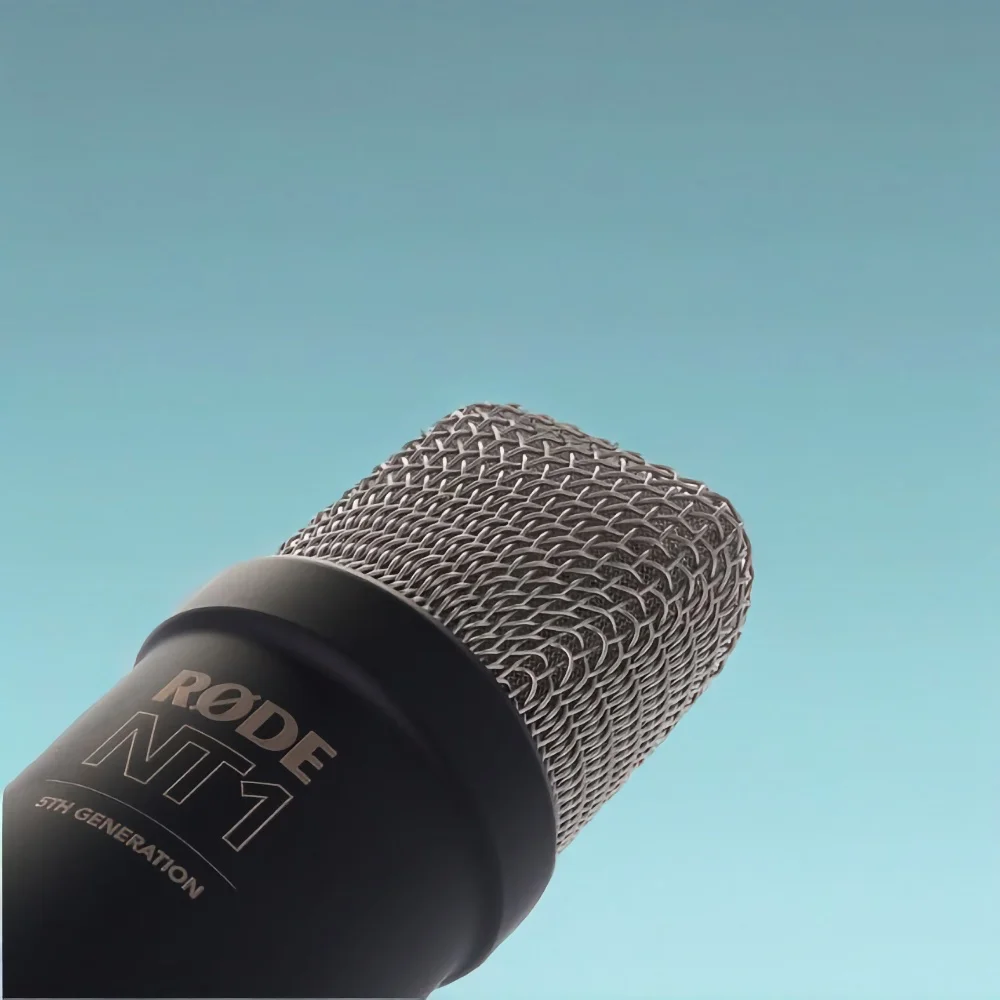
How Does It Stack Up?
The Rode NT1 5th Generation offers a blend of quality, versatility, and user-friendliness. It’s not just about what this mic can do, it’s about what it can do for you.
Compared to its peers, like the JLab Talk Pro, the NT1 5th Gen wins in build and sound quality.
Pros and Cons
Pros:
- Dual XLR and USB inputs for every scenario
- Exceptional audio quality for professional use
- Comes with all necessary accessories
Cons:
- Limited processing options at higher settings
- Lacks hands-on control with no physical knobs
- No headphone jack, which could be a deal-breaker for some
Is the NT1 5th Gen Right for You?
If you’re someone who flits between analog and digital, or if you’re setting up a studio where versatility in recording is key, this microphone is your best bet.
The NT1 5th Gen is a good choice for professionals and enthusiasts who need both quality and flexibility.
However, if you’re someone who loves physical knobs and dials, you might miss these on the NT1.
Mojave Audio MA-1000
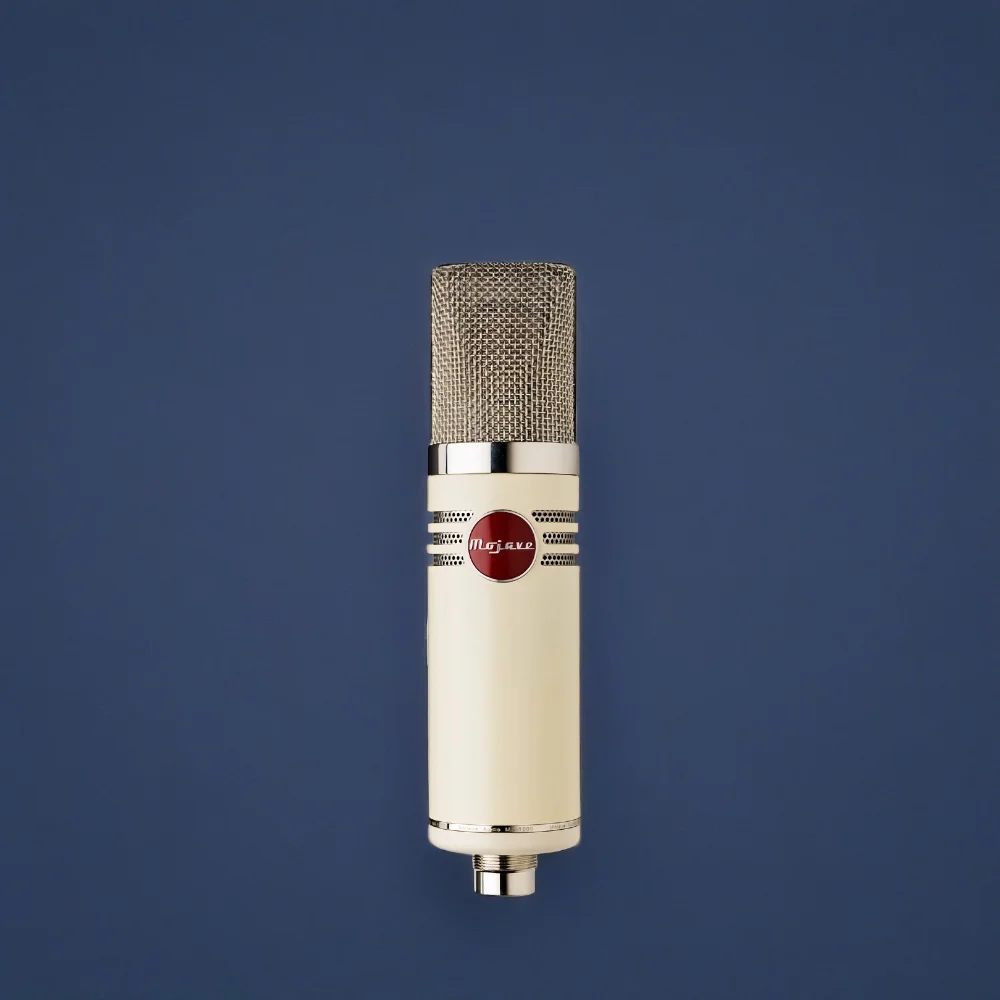
High-end tube microphone combining vintage sound and modern clarity, ideal for professional, nuanced high-resolution audio recording.
The Mojave MA-1000 is a multi-pattern valve microphone that marries the vintage tone of the legendary Telefunken ELA-M 251 with contemporary, low-noise performance.
It’s a microphone that commands attention, not only for its classic aesthetic but also for its sonic capabilities that cater to a wide array of recording applications.
Technical Specs at a Glance
- Type of Microphone: Tube condenser
- Polar Pattern: Continuously variable, allowing for precise tailoring of pickup patterns from omnidirectional to figure-8, catering to diverse studio requirements.
- Signal-to-Noise Ratio: Characterized by its low noise, it stands out in preserving the purity of recordings.
- Frequency Response: Exceptionally flat up to 10kHz, with a gentle roll-off from 12 to 20 kHz, ensuring detailed capture without harshness.
- Sensitivity: High sensitivity to subtle nuances, making it ideal for capturing the dynamic range of performances.l
- Connectivity: XLR
- Power Requirements: Needs external power supply, which comes with the microphone.
Key Features
- The Mojave MA-1000’s design incorporates a Chinese-made capsule that faithfully replicates the original CK-12 used in the Telefunken ELA-M 251.
- The microphone’s heart is an original new-old-stock 5840 tube paired with a custom-designed transformer by Coast Magnetics.
- This unique combination contributes to the MA-1000’s signature sound—lush and detailed without sacrificing the character that made its vintage predecessor so revered.
In-Studio Experience
In my hands-on sessions with the MA-1000, I found it to be exceptionally versatile. Recording vocals revealed a smooth and accurate representation with an airy presence that never became sibilant or harsh.
Acoustic instruments like guitars and violins were captured with a realism that felt both intimate and expansive.
The continuously variable polar pattern proved invaluable in managing room acoustics and isolating instruments within an ensemble.
How Does it Stack Up?
The Mojave MA-1000 competes in a league where microphones can cost upwards of $10,000 to $20,000.
Yet, it holds its ground with aplomb. Its design choices—eschewing the typical 6072 tube for an AC701 tube—set it apart from other 251-inspired mics.
The result is a sound that is clean and accurate but still retains enough warmth to avoid sterility—a balance that many clones fail to achieve.
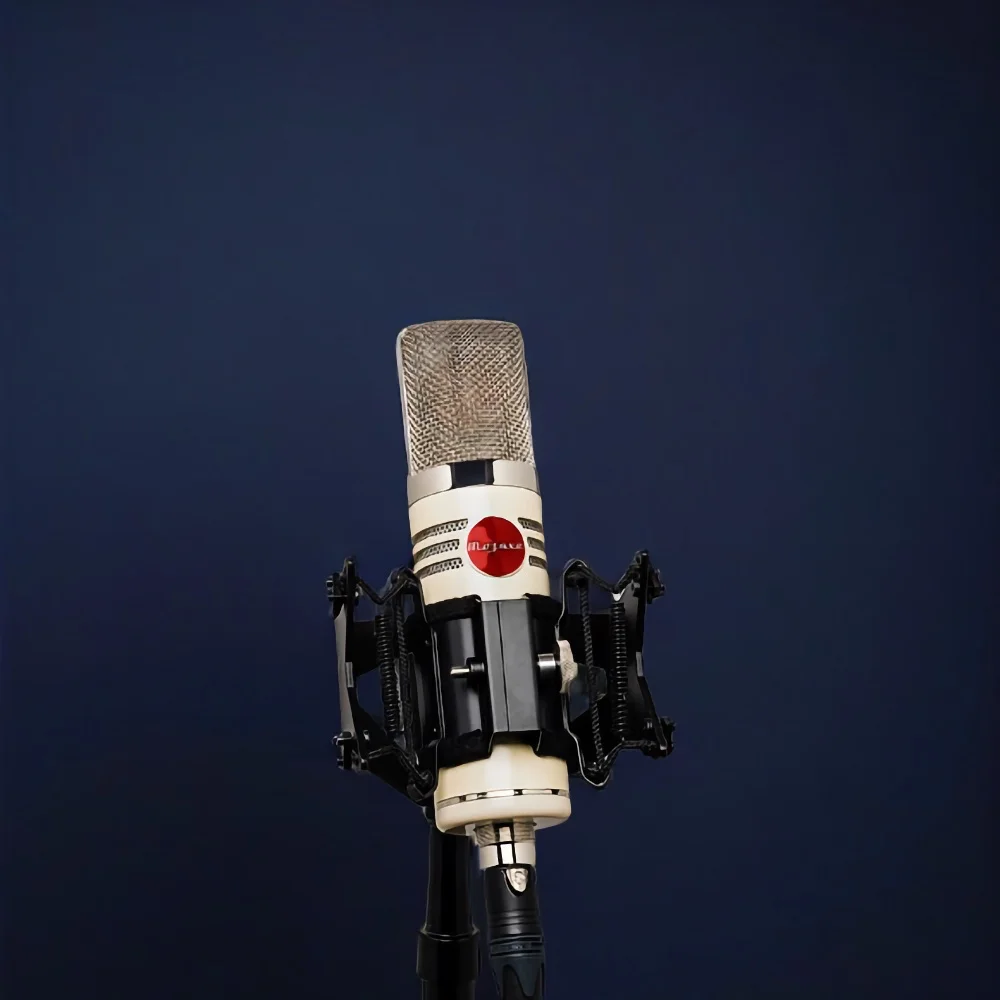
Studio Spotlight: Exclusive Features & Applications
The MA-1000’s standout feature is its ability to excel in high-resolution recording environments.
Its low noise floor allows it to capture the subtlest details just above the noise level—details often lost with lesser microphones.
This makes it particularly suited for nuanced acoustic performances where every breath and finger movement contributes to the musical tapestry.
Pros and Cons
Pros:
- Vintage-inspired sound profile with modern sonic clarity.
- Variable polar patterns offer recording flexibility.
- Low noise floor ideal for high-resolution audio capture.
- Quality packaging including a deluxe carrying case and quality suspension mount.
Cons:
- Premium pricing may be out of reach for budget-conscious users.
- Specific voices or instruments may not pair well with this mic’s particular sound characteristics.
- Requires an external power supply ( included with the mic), adding to setup complexity.
Is the MA-1000 Right for You?
The Mojave MA-1000 is tailored for discerning audio professionals who seek vintage microphone qualities without compromising on modern performance.
It’s for those who appreciate meticulous craftsmanship and are willing to invest in a microphone that can handle everything from delicate string sections to powerful vocal performances.
The Mojave MA-1000 is more than just a nod to the past, it’s a bridge to the future of audio recording.
With its thoughtful design, inspired by one of the most coveted microphones in history, and its robust build quality, it stands as a serious tool for serious artists.
Whether used in intimate studio settings or grand orchestral recordings, the MA-1000 delivers a sound that is both timeless and contemporary.
Aston Microphones Origin
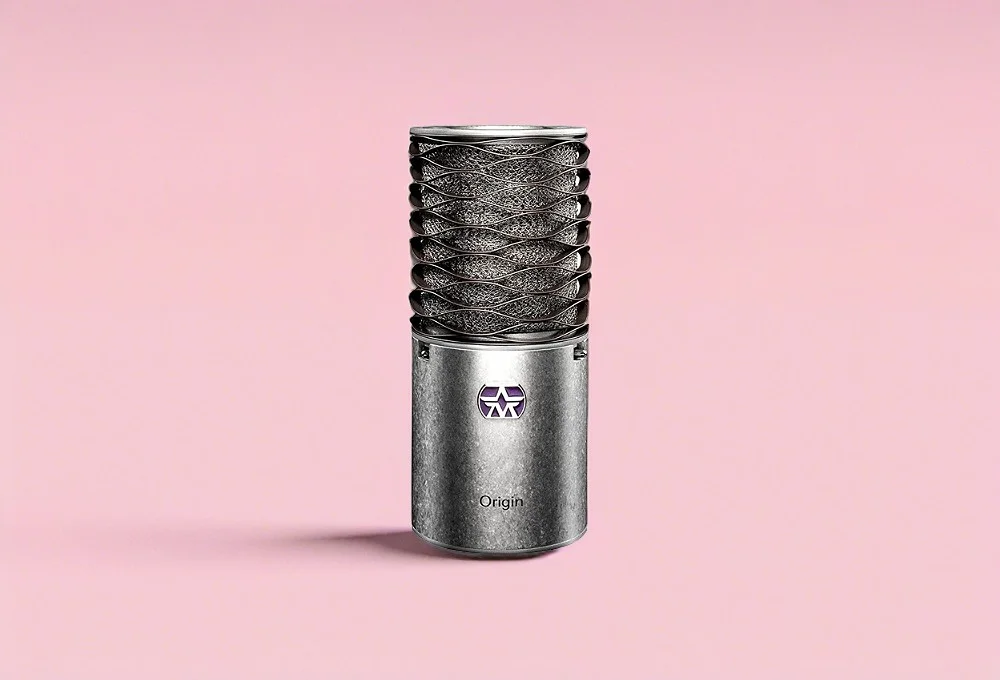
Quality British-made condenser microphone, ideal for detailed studio recordings in professional and home studio environments.
The Aston Origin condenser microphone stands out in its category with a unique blend of quality and originality at a competitive price.
Technical Specs at a Glance
- Type of Microphone: Large diaphragm cardioid condenser.
- Polar Pattern: Cardioid, capturing sound from the front and minimizing side and rear noise.
- Frequency Response: 20 Hz to 20 kHz, ensuring a full-range audio capture.
- Sensitivity: 23.7mV/Pa, adept at picking up subtle nuances.
- Maximum SPL: 127 dB, capable of handling high sound pressure levels.
- Self-Noise: 18 dB, fairly low for its class.
- Connectivity: Standard XLR.
- Power Requirements: Requires 48 volts phantom power.
- Additional Features: A -10 dB pad for louder sources and an 80 Hz high-pass filter for managing low-frequency noise.
Key Features
- Boasts a robust all-metal body and a visually striking metal grill durability and aesthetic appeal.
- The waveform spring head provides shock resistance.
- The built-in mesh pop-filter efficiently mitigates plosives, ensuring clear audio capture.
In-Studio Experience
In various recording scenarios, the Origin consistently impresses.
Its sensitivity brings out the rich harmonic details in instruments like the saxophone and acoustic guitar, handling their dynamic range with balanced ease.
Vocal recordings are particularly noteworthy, with the microphone capably capturing the subtle variations in the voice, from raspiness to sibilance.
However, it’s important to note that while its self-noise level of 18 dBA isn’t overly intrusive, there is room for improvement compared to some of its peers like the Rode NT1.
Additionally, for low-frequency recordings, the use of an external shock mount is recommended to manage mechanical noises effectively.
How Does it Stack Up?
When compared to other microphones in its price range, such as the Audio Technica AT2020 or the Rode NT1-A, the Aston Origin holds its own.
Its sound signature is characterized by a warm and clear tone, without being overly bright or sibilant. Its performance with electric guitars is particularly commendable, adding a desirable bite to the sound.
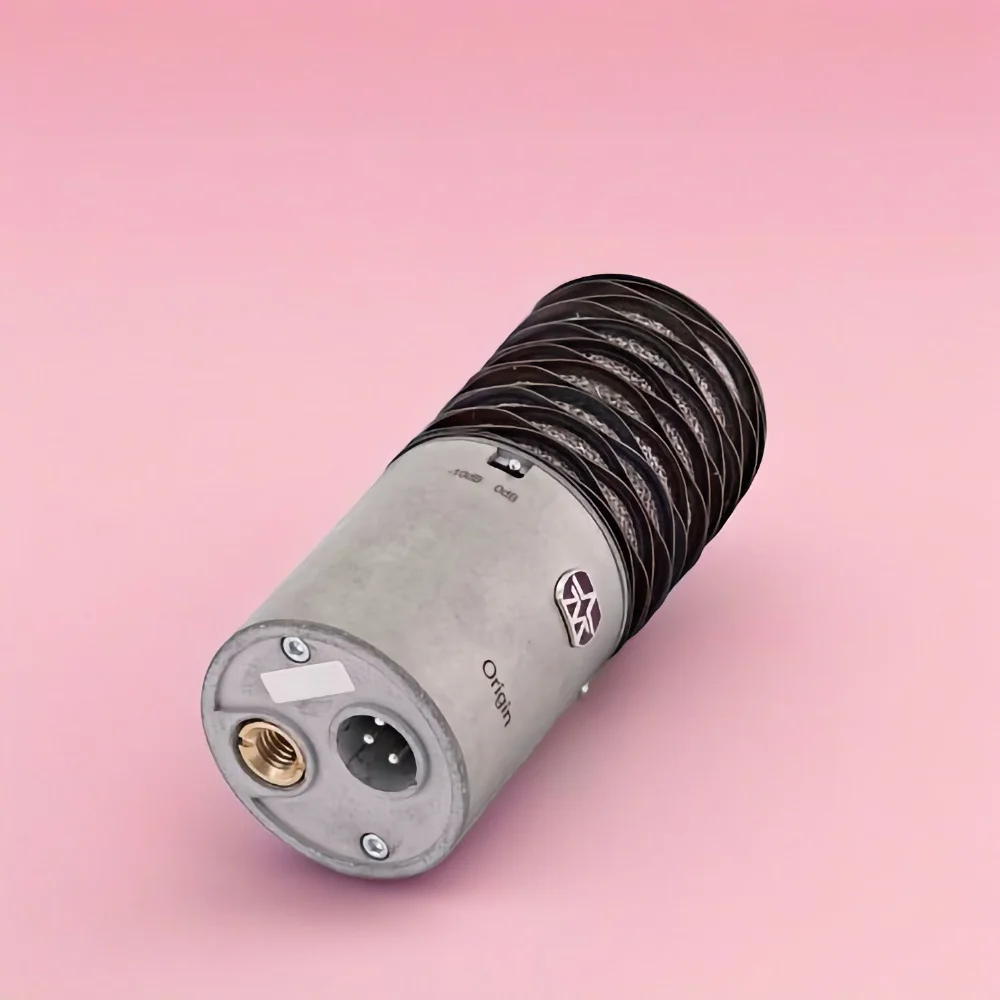
Studio Spotlight: Exclusive Features & Applications
The Origin’s unique design elements, like the absence of vertical support posts around the capsule, significantly contribute to its sound quality.
The cardioid pattern is ideal for home studios, offering enough directivity for focused recording while still capturing some ambient sound.
This versatility makes it suitable for various studio applications, from voiceovers to instrument capturing.
Pros and Cons
Pros:
- Robust build quality with a unique design.
- Clear, detailed sound profile suitable for a range of applications.
- Environmentally friendly packaging.
- Competitive pricing for its quality.
Cons:
- Higher self-noise level compared to some competitors.
- Limited to a cardioid polar pattern, affecting versatility.
- Requires external shock mount for optimal performance in certain situations.
Is the Ashton Origin Right for You?
The Aston Origin is a quality all-round microphone which strikes an excellent balance between quality, design, and price.
Its detailed sound capture, coupled with its sturdy build and unique design, makes it a competitive choice in its price range.
It is particularly recommended for those looking for a microphone that adds clarity and character to their recordings.
While it may have some limitations, such as a slightly higher self-noise level, its overall performance and build quality make it a commendable choice for anyone looking to elevate their audio recording experience.
Neumann TLM 103
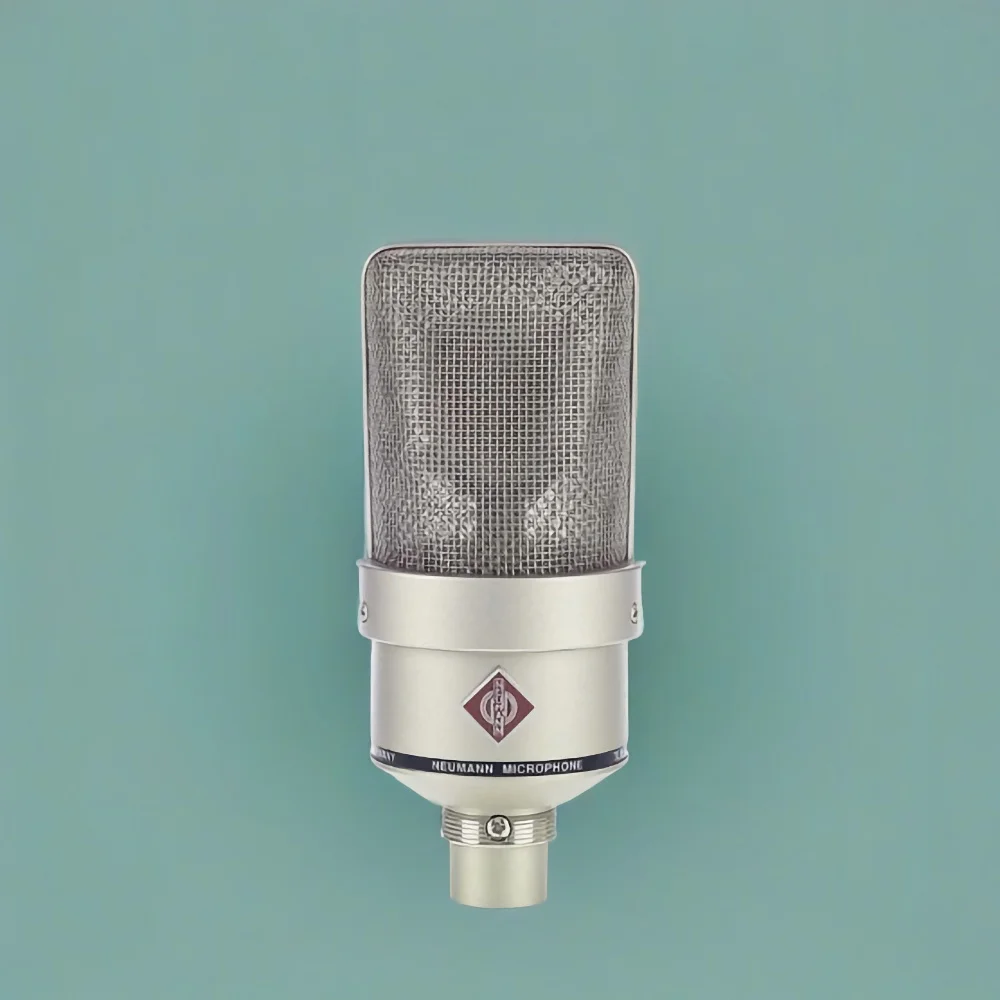
High-quality cardioid condenser microphone, ideal for professional studios and high-end home recording, offering clear, warm audio.
At first glance, the TLM103 bears a striking resemblance to its predecessor, the U87. It features a familiar wedge-shaped wire mesh grille, instantly recognizable by audio professionals.
However, the TLM103 opts for a more compact form factor, shedding the slightly conical shape of the U87 for a streamlined, modern aesthetic.
This design choice not only gives it a unique identity but also makes it more adaptable to various studio setups.
Technical Specs at a Glance
- Type of Microphone: Large-diaphragm condenser.
- Polar Pattern: Cardioid, ideal for isolating sound sources.
- Frequency Response: 20 Hz to 20 kHz, capturing a wide range of tones.
- Signal-to-Noise Ratio: Impressively low at 7 dBA.
- Sensitivity: 21 mV/Pa, ensuring detailed sound capture.
- Connectivity: Standard XLR for universal compatibility.
- Power Requirements: 48 volts phantom power.
- Dynamic Range: An expansive 131 dB.
- Maximum SPL: 138 dB, capable of handling loud sources without distortion.
Key Features
- The cardioid pattern focuses on the sound source, effectively reducing background noise, which is particularly useful in home studios or spaces with less ideal acoustics.
- The TLM103’s frequency response is characterized by a presence boost in the higher frequencies, lending clarity and definition to recordings which is carefully balanced to avoid harshness, making it suitable for a wide array of vocal timbres and instruments.
- The large diaphragm captures sound with a warmth and fullness that is quintessentially Neumann.
- Its proximity effect can be used creatively to add richness to vocals, lending an intimate feel to recordings.
- For instruments like acoustic guitars, the TLM103 provides a detailed and lively reproduction, capturing the nuances of the performance.
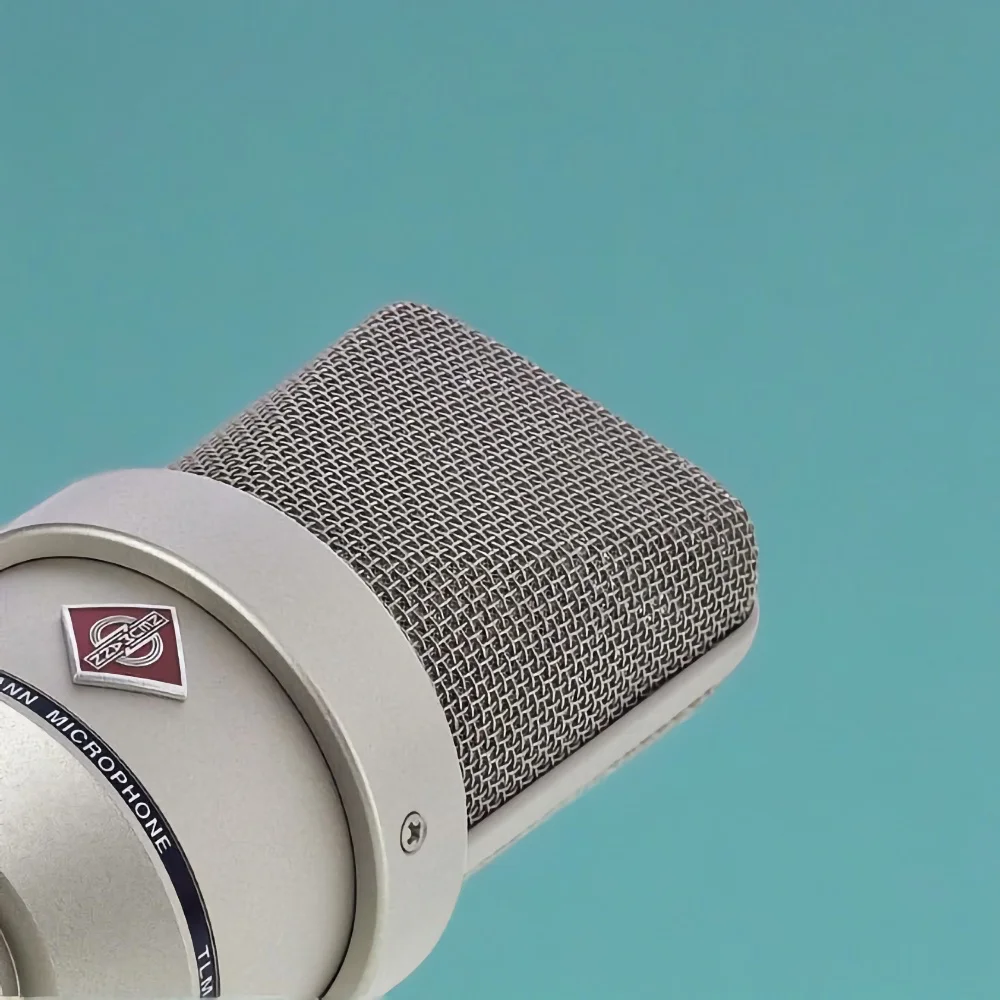
In-Studio Experience
The TLM103’s true potential shines in diverse recording scenarios.
From voice-over work to intricate acoustic guitar sessions, the microphone delivers consistent, high-quality results. Its ability to handle high SPLs makes it a suitable choice for louder sound sources, such as drums or amplified instruments.
At the same time, its detailed capture ensures that quieter, more nuanced performances are recorded with clarity and precision.
Users of the TLM103 often praise its straightforward functionality.
The absence of switches or additional controls streamlines the recording process, allowing users to focus on performance rather than technical adjustments.
This simplicity, coupled with the microphone’s robust build, makes the TLM103 a reliable tool in any recording setting.
The microphone’s sensitivity, while an asset in controlled environments, does require consideration of room acoustics and external noise.
For optimal results, the use of a pop shield and careful placement is recommended to mitigate any potential plosives or ambient sound interference.
Pros and Cons
Pros:
The microphone’s build quality is exceptional, a hallmark of Neumann’s manufacturing standards. Renowned Neumann audio quality.
- Solid, durable build with a modern design.
- Clear, detailed sound with a warm character.
- Excellent dynamic range and SPL handling capabilities
- Low self-noise, suitable for a variety of recording situations.
- The included swivel stand adaptor is elegantly simple, allowing for easy angle adjustments to suit different recording situations.
- It comes in two finishes: satin nickel and matt black, each adding an element of sophistication..
Cons:
- Higher price than some competitors.
- Fixed cardioid patterns may limit its application in some recording scenarios.
- Sensitivity to ambient noise necessitates a controlled recording environment.
Blue Yeti X
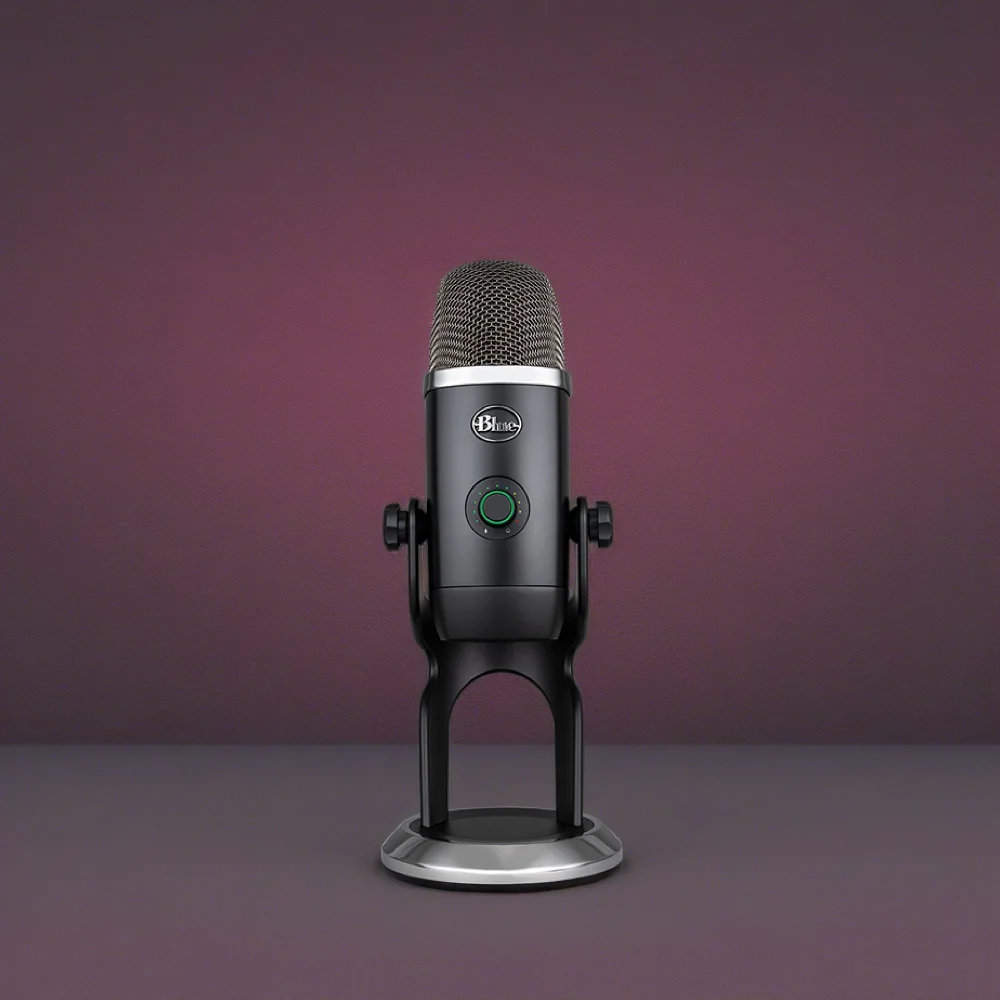
Versatile Yeti X microphone: Superior sound, user-friendly features, ideal for digital content creators and home studios.
The Blue Yeti X is a game-changer for streamers, podcasters, YouTubers, and aspiring voice actors who seek studio-quality recording in the comfort of their homes and for an affordable price.
Technical Specs at a Glance
- Type: Condenser, offering rich audio capture.
- Polar Patterns: Four options – cardioid, omnidirectional, bidirectional, and stereo, enhancing versatility.
- Frequency Response: Wide range from 20 Hz to 20 kHz, capturing the full spectrum of sounds.
- Connectivity: USB, ensuring ease of use and compatibility.
- Power: USB-powered for convenience.
- Dimensions: Compact at 11 x 12.2 x 28.9 cm, perfect for desktop use.
- Weight: A solid 1.27kg, indicative of its robust build.
- Model Number: 988-000105, a unique identifier in the Yeti lineup.
The Yeti X’s design exudes a professional aura with its all-metal body and grille.
The desktop stand it comes with is both practical and stylish, while the option to use a standard mic stand adds to its versatility.
The microphone’s black-and-silver theme fits seamlessly into any studio setup, be it professional or home-based.
Key Features
- Multi-Function Dial: The front panel knob is convenient for adjusting gain, headphone volume, and audio balance effortlessly.
- LED Metering: Visual input level monitoring to prevent clipping.
- Polar Pattern Selection: A user-friendly button on the back for easy mode switching.
- Zero-Latency Monitoring: Real-time audio feedback through a 3.5mm jack.
In-Studio Experience
With its four-capsule condenser array, the Yeti X surpasses its predecessors in capturing sound with exceptional clarity.
The absence of digital signal processing allows for a raw, unaltered audio output, offering greater post-production flexibility. This feature alone makes the Yeti X a favorite among audio purists and professionals.
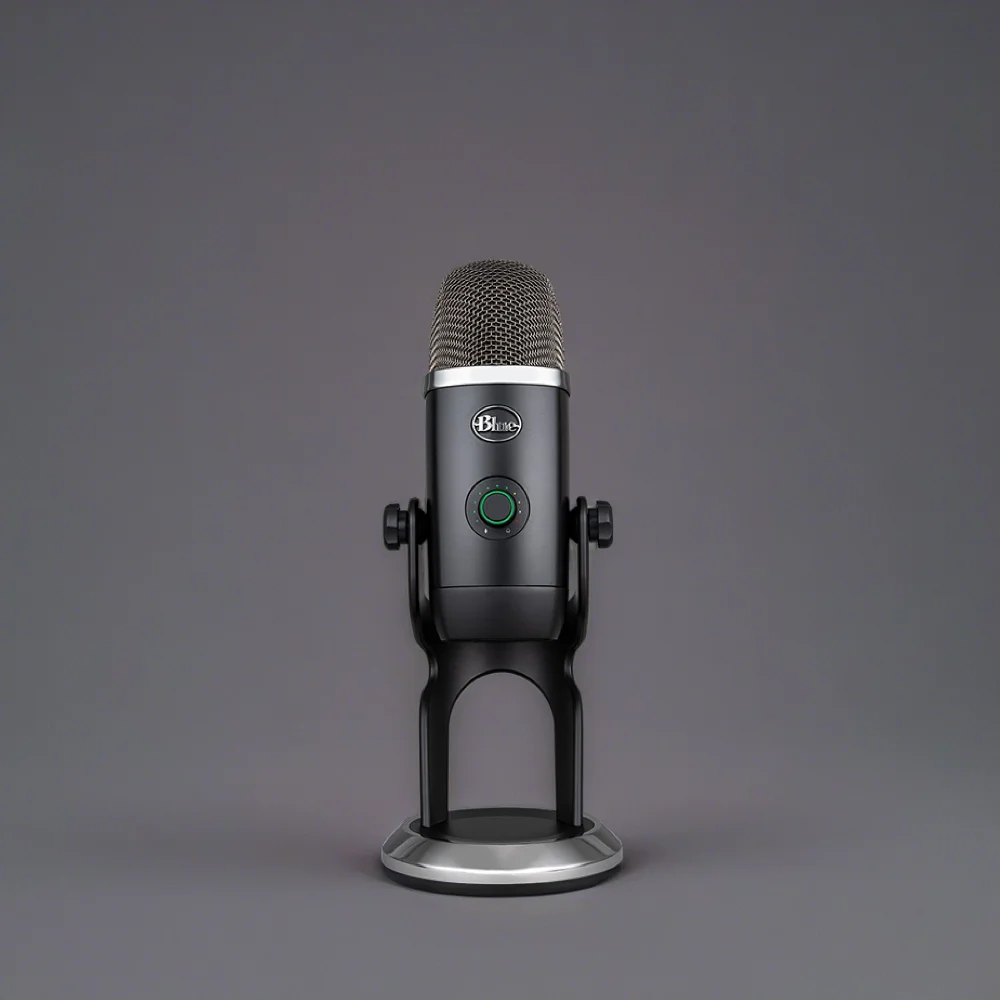
Studio Spotlight: Adapting to Every Recording Scenario
The Yeti X’s diverse recording patterns make it a versatile tool for various audio projects:
- Cardioid Mode: Optimal for solo podcasts, voice-overs, or streaming.
- Omnidirectional: Captures all-around sound for ambient recordings or group discussions.
- Bidirectional: Perfect for face-to-face interviews and collaborative recordings.
- Stereo: Ideal for musical projects needing a rich, layered audio capture.
Pros and Cons
Pros:
- Exceptional Sound Quality: Offers crisp, clear audio-capturing capabilities.
- Versatile Recording Patterns: Adaptable for various audio environments and needs.
- User-Friendly Controls: Simplifies adjustments with an on-mic LED display and multifunction knob.
- Robust Construction: Durable build quality assures longevity.
- Competitive Pricing: Offers premium features without an exorbitant cost.
- Software Support: Compatible with Blue Voice software for added customization.
Cons:
- Bulky Design: Might be slightly large for limited workspace setups.
- Additional Accessories Needed: For optimal use, a pop filter or external stand might be necessary.
- Windows-Centric Software: The Blue Voice software initially caters more to Windows users.
Is the Yeti X Right for You?
The Yeti X is designed with a diverse range of users in mind:
- Digital Content Creators: Provides high-quality audio for streaming and YouTube content.
- Educational Use: Ideal for students and teachers in podcasting or online content creation.
- Home Studio Artists: Offers a cost-effective solution for musicians and producers starting out.
Summary: The Yeti X – A Leader in Digital Audio Recording
The Blue Yeti X stands out as a paragon of USB microphone. It skillfully combines high-quality sound, user-friendly features, and versatile recording capabilities.
With a reasonable price tag, it is an accessible tool for anyone serious about audio quality, from beginners to seasoned professionals.
The Yeti X is not just a microphone. It’s an investment in your audio journey, ensuring that every recording is captured with the clarity and depth it deserves.
With its impressive array of features and strong build, the Yeti X is set to remain a mainstay in the realms of streaming, podcasting, and home recording.
Other Good Studio Microphones For Recording
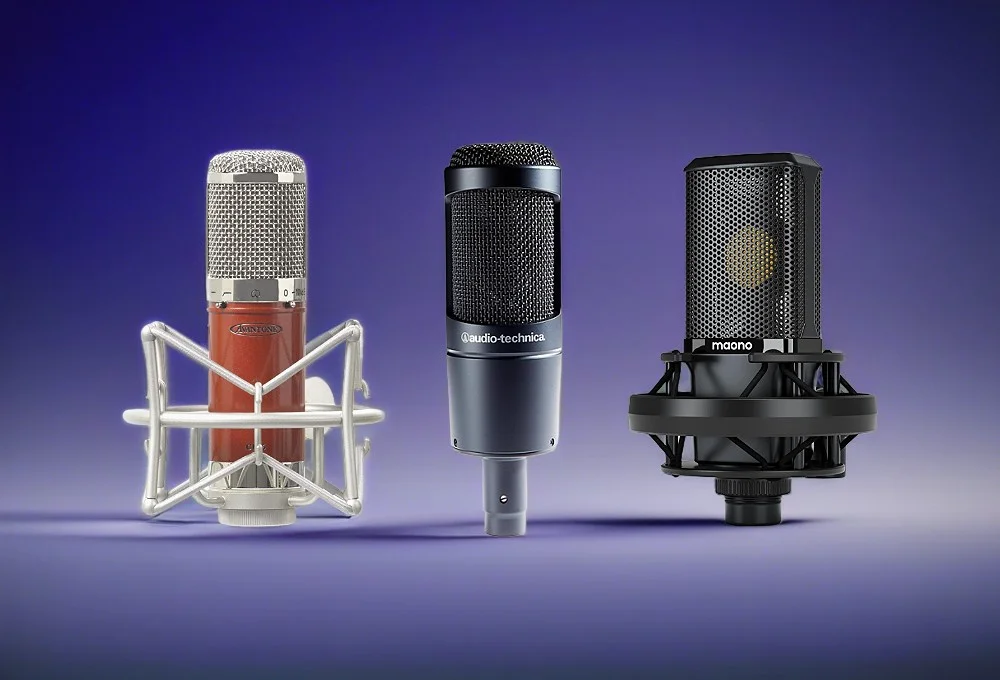
The Audio-Technica AT2035 is a versatile large diaphragm condenser mic that can handle a variety of instruments, from bass drums to acoustic guitars. However, its low cut switch and -10db pad, while providing a dynamic range for louder instruments, may require some time to get used to for beginners. Also, the microphone’s design is quite bulky, which might not be ideal for compact studio spaces.
The Shure MV7 is a recent release from Shure that combines USB recording and traditional XLR capabilities. Its included MOTIV app allows users to choose from a number of preset tones. However, the app interface can be a bit confusing for those not familiar with digital audio workstations. Additionally, the microphone’s USB functionality may not be compatible with all recording software.
The sE Electronics X1 S is a durable microphone with a great tone, suitable for vocals and percussion instruments. It’s particularly favored by jazz players. However, its black rubber paint finish, while aesthetically pleasing, can be prone to scratches and wear over time. Also, the 10dB pad and bass cut features may require some experimentation to achieve the desired sound.
The Rode NT1-A is a workhorse microphone that performs well above its price range. Its unique frequency response is fantastic for recording instruments with a rich mid-range, such as acoustic or electric guitars. However, its sensitivity may pick up unwanted background noise in less-than-ideal recording environments.
The Avantone Pro CK-6 Classic is a budget-friendly microphone with a classic look, thanks to its bright cabernet red body. It comes with a shock mount and carrying pouch. However, its bright sound may not be suitable for all types of recordings, particularly those requiring a warmer tone.
The MAONO XLR Condenser Microphone is a professional cardioid studio mic featuring high fidelity sound and a 34mm Large Diaphragm. It’s ideal for podcasting, recording, streaming, vocals, voice over, and music. However, its large diaphragm may not be ideal for recording instruments with a high frequency range.
FAQs
Which Is the Best Studio Microphone?
Choosing the best studio microphone involves considering your specific needs. For studio mics, the Neumann U87 Ai from the Georg Neumann company is often regarded as a great option for its extended frequency response and versatility. If you’re looking for a mic for vocals, the Rode NT1, a large diaphragm condenser, is a fantastic choice for its clear and detailed sound. Remember, every mic has its unique characteristics, so it’s crucial to pick up sound quality and suitability for your recording environment. The Neumann U47 is another great option.
What Microphones Should You Use For Studios?
In new studio setups, you’ll typically find a mix of dynamic mics, condenser mics, and ribbon microphones. Dynamic mics like the Shure SM58 are used to record loud sources like drums, while large diaphragm condenser mics are often the choice for vocals and acoustic instruments due to their sensitivity and range. Ribbon mics, known for their warm and natural sound, are great for capturing the subtleties in vocals and instruments.
What Mic Do Professional Artists Use?
Professional artists often choose the right microphone based on the recording context. The Shure SM7Bis a popular dynamic mic for its robustness and versatility, making it a great microphone for various studio applications. For a more nuanced capture, artists might turn to large diaphragm condenser mics like the Neumann U87 Ai, known for its clear and detailed sound, especially suited for vocals and acoustic instruments.
What Mic Does Drake Use?
Drake often records with the Shure SM7B, a studio mic that’s a great choice for vocals, offering a warm and intimate sound profile. This microphone is a solid choice in the mic locker of many artists due to its durability and versatility, making it an excellent choice for capturing the unique style of Drake’s vocals. Don’t forget the stylish headphones while recording with this mic!
What Mic Does Billie Eilish use live?
Billie Eilish often uses the Telefunken M80 microphone for her live performances. This microphone is known for its ability to capture the nuanced dynamics of her voice, making it a great choice for vocals, both in studio and live settings. The M80’s clarity and balanced sound profile make it a favorite in the mic locker of many professional artists.
What Mic Did Michael Jackson Use?
Michael Jackson famously used the Shure SM7B microphone while recording “Thriller.” This microphone, with its smooth, flat, wide-range frequency response, is an excellent choice for vocals, suitable for both studio recordings and live performances. Its ability to handle high sound pressure levels made it a key tool in capturing Jackson’s iconic vocal style.
What Mic Does Eminem Use?
Eminem typically uses the Neumann U87 Ai in the studio, a microphone revered for its clear and detailed sound, making it an excellent mic to record rap vocals. This mic’s versatility and quality make it a preferred choice for Eminem’s precise and impactful performances. For live settings, Eminem might choose a microphone that complements the acoustics of the venue and his dynamic stage presence.
What are the key design features to consider when choosing a studio microphone for recording saxophone?
Look for a microphone with a robust build quality that can accommodate the dynamic range and pressure levels of a saxophone. A good shock mount is important to reduce handling noise, and an adjustable stand or boom arm will help position the mic effectively.
How does high-frequency response impact the choice of a studio microphone for saxophone recording?
Saxophones produce rich overtones that extend into the high-frequency range. A microphone with a smooth, extended high-frequency response ensures these overtones are captured accurately, contributing to a more natural and detailed sound.
Is it better to use condenser or dynamic microphones for capturing saxophone performances in the studio?
Condenser microphones are generally preferred due to their sensitivity, wide frequency response, and ability to capture fine details, which makes them excellent for picking up the nuanced tones of a saxophone. However, dynamic mics can also be used effectively, especially when dealing with very loud environments or if seeking a particular warmth in tone.
What polar pattern is most suitable in a studio microphone when recording solo saxophone pieces?
A cardioid polar pattern is often chosen because it focuses on capturing sound from directly in front of the microphone while rejecting off-axis sounds. This helps isolate the saxophone from unwanted room noise or other instruments during solo recordings. However, depending on room acoustics and desired ambiance, omnidirectional or figure-eight patterns might also be considered.
Choose the Best Studio Microphone: Our Pick for the Best Studio Mic
A studio icon for unparalleled sound quality and versatility in professional recording.
Before you go…
Selecting the perfect studio mic is only the first step in creating your music production setup.
To become a successful producer, you’ll need other gear.
Read our other in depth articles for expert guidance on choosing the best music gear for your studio:

